Introduction
Each year, our staff selects their favorite backcountry gear from the past 12 months, and we look forward to you sharing your favorite gear of the year as well in the forum comments below!
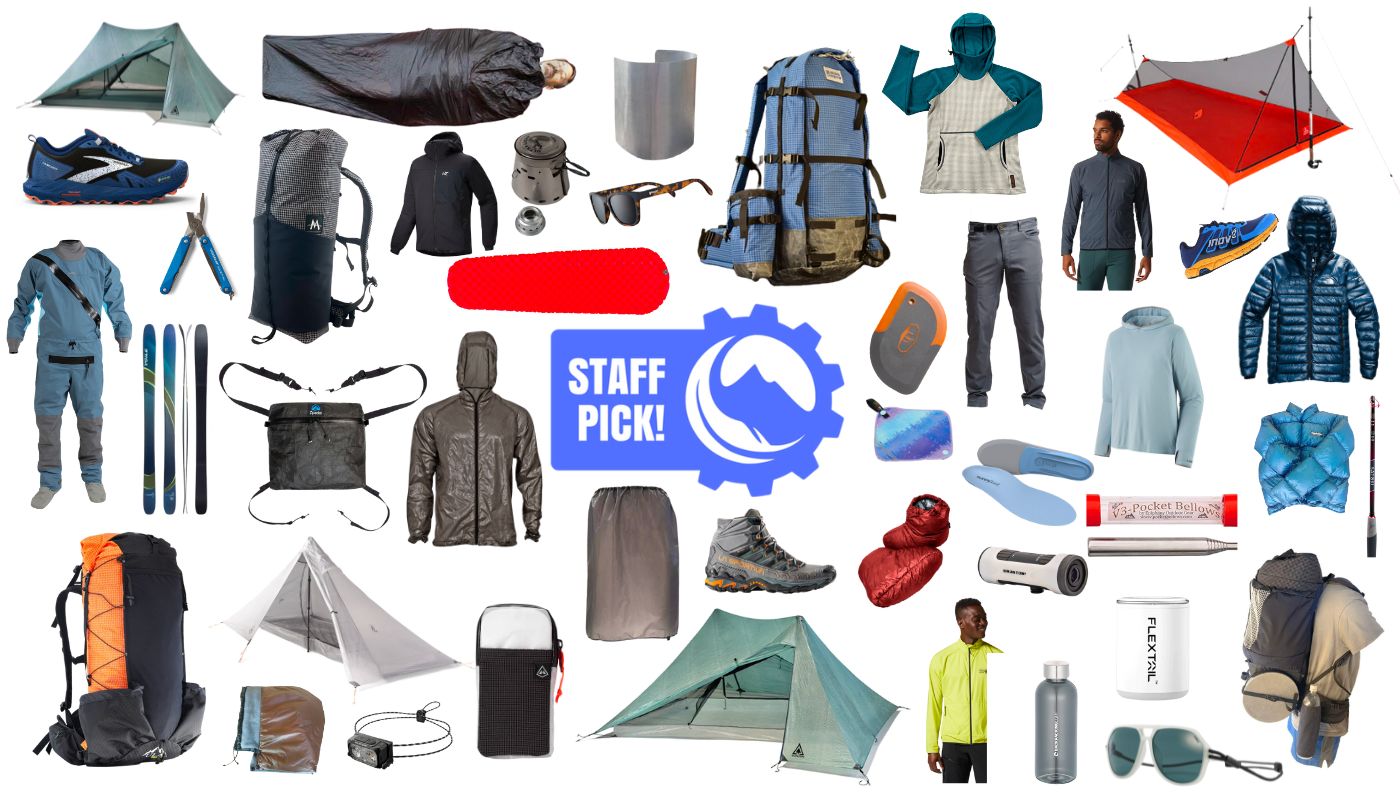
Our Staff
This year’s Staff Picks contributors are:
- Matthew King – Community Moderator
- Bill Budney – Contributing Author
- Atif Khan – Contributing Author
- Jeff de Graffenried – Contributing Author
- Chase Jordan – Production Editor
- Mark Wetherington – Contributing Author
- Isaac Simons – Contributing Author
- Drew Smith – Contributing Author
- Ben Kilbourne – Contributing Author
- Sarah Bennett – Contributing Author
- Iago Vazquez – Contributing Author
- James Montavon – Contributing Author
- Ryan Jordan – Owner/Founder
- Stephanie Jordan – Owner/Founder
- Stephen Seeber – Contributing Author
- Anna Swarts – Instructor
Table of Contents
Table of Contents • Note: some sections may only be available to Premium or Unlimited Members.
- Introduction
- Our Staff
- Table of Contents
- Shelters and Sleep Systems
- Packing Systems
- Clothing Systems
- Arc’teryx Proton LT Hoody
- Enlightened Equipment Copperfield Windshirt
- Enlightened Equipment Rain Wrap
- Goosefeet Gear Down Socks
- Kōkatat Swift Entry Dry Suit
- Melanzana Micro-Grid Hoodie
- Mountain Hardwear Airmesh Half-Zip
- Mountain Hardware Kor Airshell Full Zip Jacket
- North Face Summit L3 Down Hoodie
- Outdoor Vitals Satu Adventure Pants
- Rab Downpour Eco Waterproof Jacket
- Patagonia Tropic Comfort Natural UPF Hoody
- Timmermade SUL 1.5 Down Sweater
- Timmermade SUL Waterbear Hood
- Cooking, Foot Storage, and Hydration
- Footwear
- Navigation and Electronics
- Accessories
Shelters and Sleep Systems
Durston Gear X-Mid Pro 1

As close as you can get to a one-size-fits all backcountry shelter. Luxuriously spacious, with ample vestibules and interior storage, the X-Mid Pro 1 boasts a thin and flexible Dyneema fabric that resists absorption during downpours, avoiding the sag and increased weight that such fabrics as silpoly take on with water. For a fully-enclosed trekking pole shelter, you can do no better. – Isaac Simons
- Learn more about the Durston X-Mid Pro 1 in the Backpacking Light Gear Shop.
Durston X-Mid Pro 2
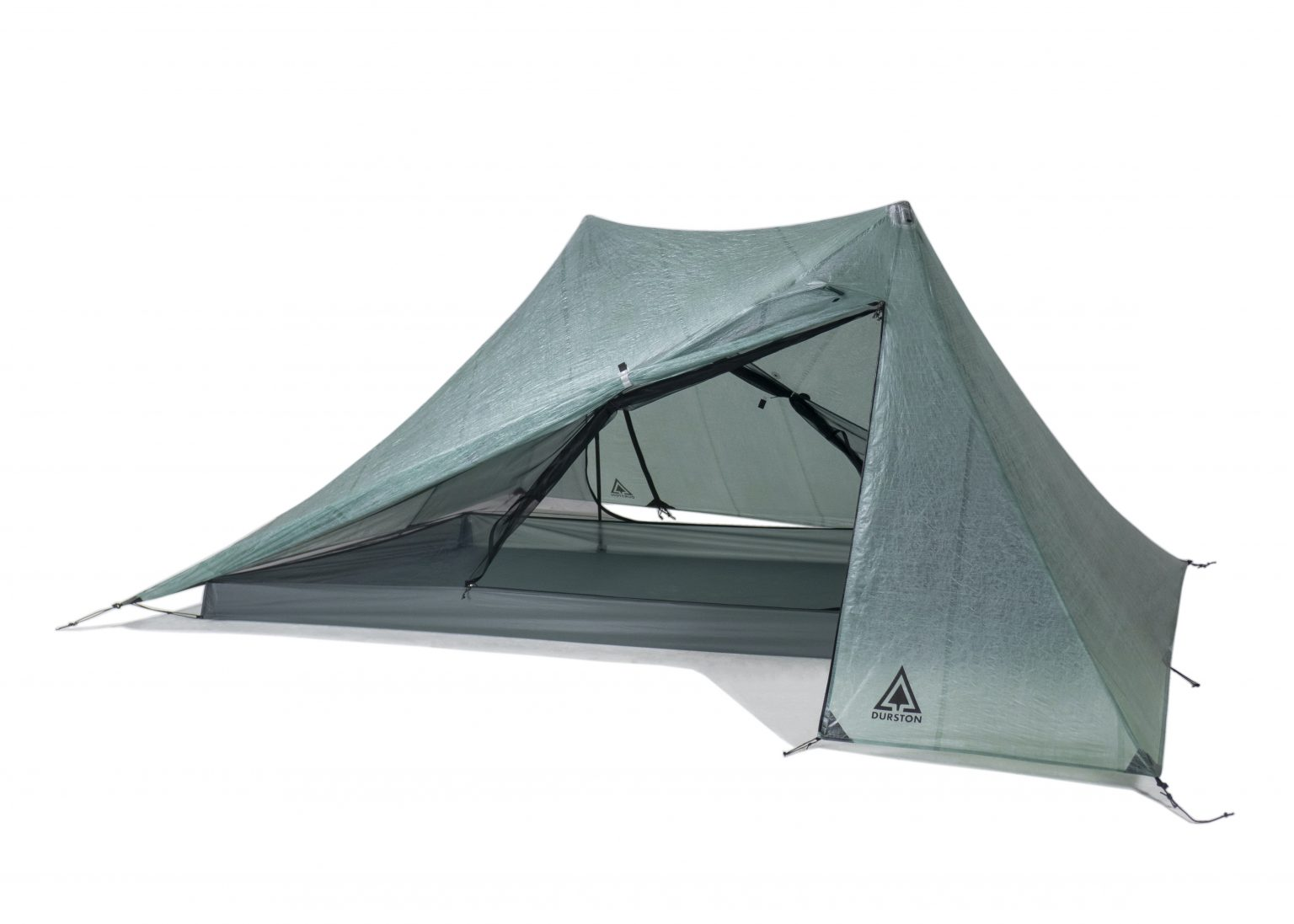
This X-Mid Pro 2 is about as perfect as it gets for three-season backpacking in the Northern Rockies. Lightweight, roomy even with two people inside, handles storms well, and is easy to set up. I couldn’t be happier with this tent, whether I’m hiking solo or with a partner. – Mark Wetherington
- Learn more about the Durston X-Mid Pro 2 in the Backpacking Light Gear Shop.
Hyperlite Mountain Gear Mid 1

When I’m choosing my shelters, ease and speed of setup is a key consideration for me – I don’t go on backpacking treks to set up camp, but often to spend time exploring, being inspired, or catching monster trout in alpine lakes. The Hyperlite Mountain Gear Mid 1 found its way into my backpack several times this year because of how easy it was to set up, with the integrated inner staying dry when pitching it in stormy conditions while providing added comfort during mosquito season. This is by far my favorite integrated shelter for these reasons – and I expect it to be one of the primary shelters I’m using for years to come. – Chase Jordan
- Learn more about the Hyperlite Mountain Gear Mid 1 in the Backpacking Light Gear Shop.
Mountain Laurel Designs Sleeping Bag Liner
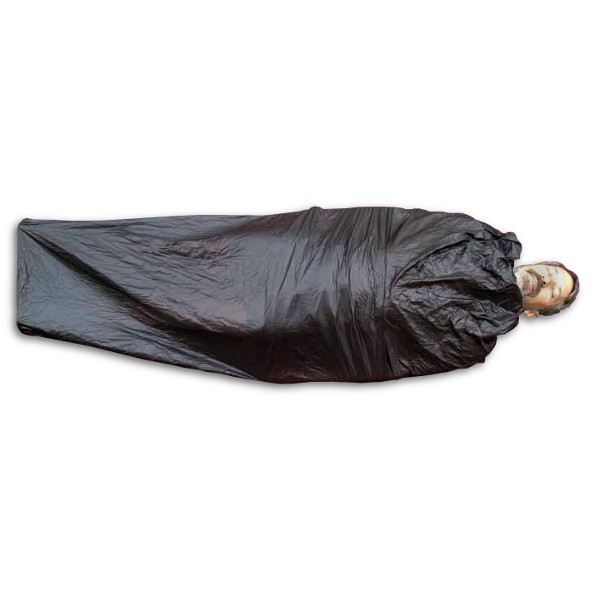
MLD markets the Mountain Laurel Designs Sleeping Bag Liner as a bag liner, but I find it to be an excellent minimalist bivy sack. It weighs in at 3.0 oz (85 g) and has no hood and no zippers. It is just a tapered cylinder of 10D nylon with a drawstring opening at the top. Despite this lightweight and simplicity, the liner does a number of things for me. It keeps drafts out of my quilt. It adds a few degrees of warmth. It is not waterproof, but is water-repellent enough to keep dew at bay when cowboy camping, and to stop rain splash when tarping. It keeps mosquitoes and ants off my body. It can be used as a lightweight bag on warm summer nights. Despite the lack of a zipper, I find it easy enough to pull down and exit from when nature calls. It lacks a hood, but the hood of my windshirt works just fine in that capacity when needed. Being a bag liner, it is cut slimmer than a true bivy sack: 54 in /140 cm circumference at the shoulder. Most bivys are > 70 in /175 cm. At 165 lbs/75 kg with a 20° F/-8° C quilt, I find it plenty roomy. If you are much larger or are using a warmer bag, you could find it too small. But if the MLD bag liner is not too small for you, it provides most of the functions of a true bivy sack for minimal weight and expense. It is very much worth considering as an addition to your sleep system. – Drew Smith
Sea to Summit Comfort Plus Insulated Air Sleeping Mat
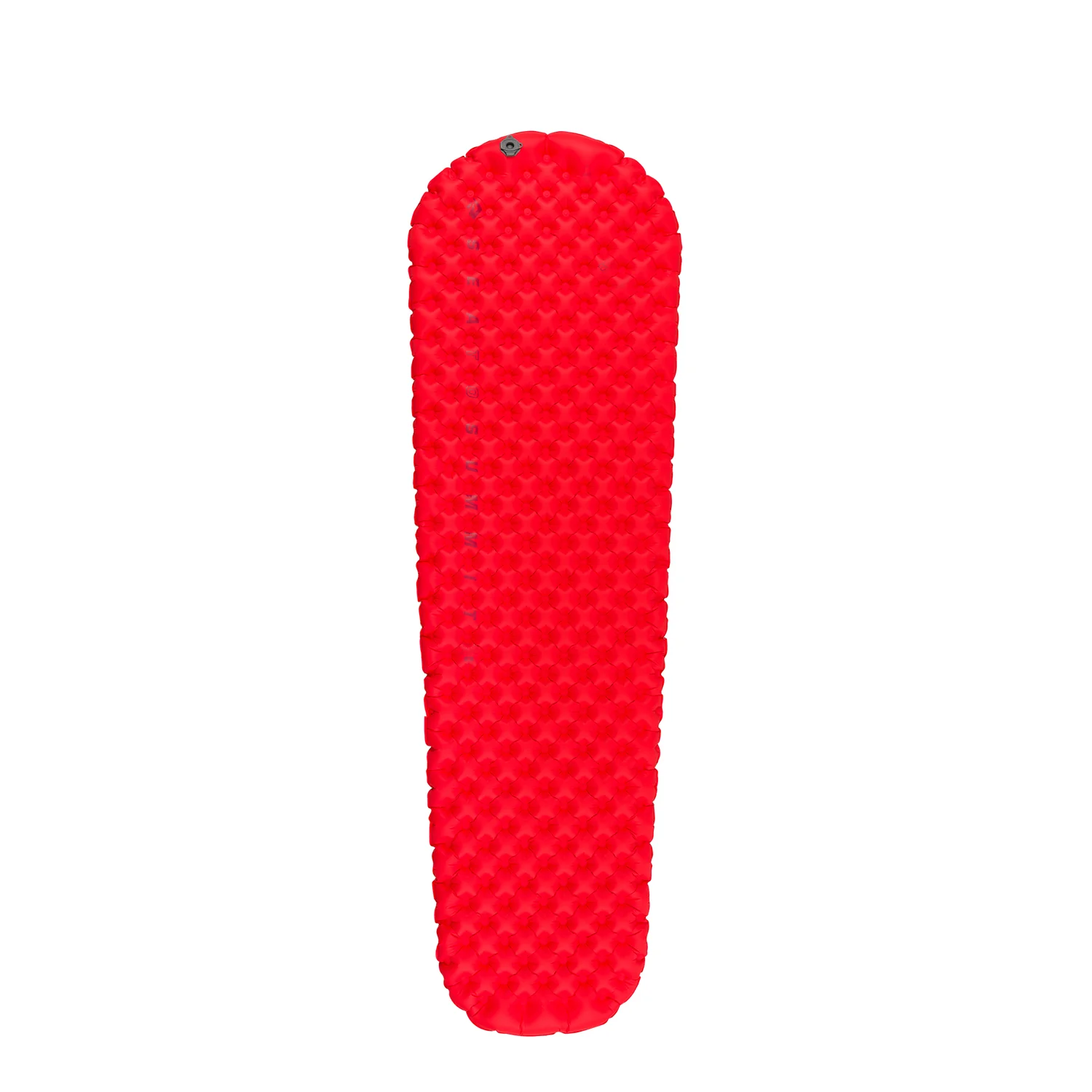
If your sleep system is preventing you from enjoying backpacking, the Sea to Summit Comfort Plus Insulated Air Sleeping Mat is the pad to get. I’m a female side sleeper that’s prone to lower back pain, and I have slept on this pad for weeks at a time without any back spasms. The trick is to overinflate the bottom and under inflate the top, so that one’s hips can sink into the pad without hitting the ground. At 29.8 oz, it’s on the heavier side for a backpacking mat – but as someone who needs the back support, the extra weight is absolutely worth it. – Sarah Bennett
SlingFin Splitwing Mesh Body

I purchased the SlingFin SplitWing Mesh Body as a standalone piece for my hike through Majete National Park in Malawi. I cowboy camped and needed an ultralight net in case there were mosquitos. There were, and this shelter worked great. It is ultralight, packs super small, and when others were swatting at mosquitoes all night, I was piecefully enjoying the view of the stars through the net. As a bonus, I can also use it with my HMG flat tarp too. – Jeff de Graffenried
- Learn more about the Slingfin Splitwing Shelter System in the Backpacking Light Gear Shop.
Packing Systems
Hyperlite Mountain Gear Shoulder Pocket
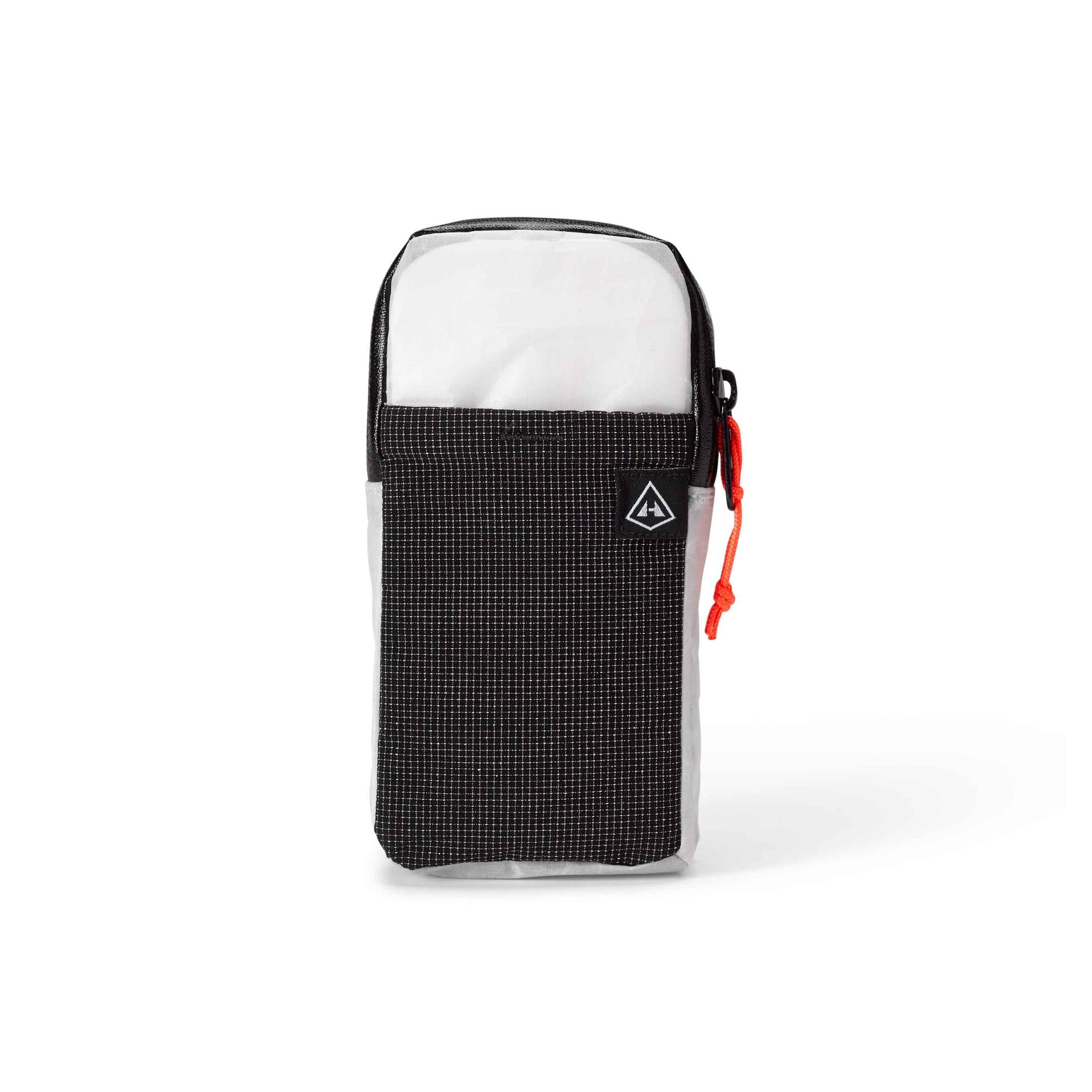
This item is so useful, I wore out the first one and had to replace it. This lightweight, waterproof pocket can hold two phones (if packed tightly together), and a recharger cord, etc. in the outside mesh pocket. It is durable, adjustable and I have found it an essential piece of gear. – Jeff de Graffenried
- Learn more about the Hyperlight Mountain Gear Shoulder Pocket in the Backpacking Light Gear Shop.
McHale Custom Pack

After owning several packs over the decades, I have settled on a custom-fitted McHale. This 1.9 lb internal frame works as a 50 L pack for weekend walks and expands into a 100 L desert crosser for 70 lb water and food hauls. – Atif Khan
Mountain Laurel Designs Hell 27L Backpack
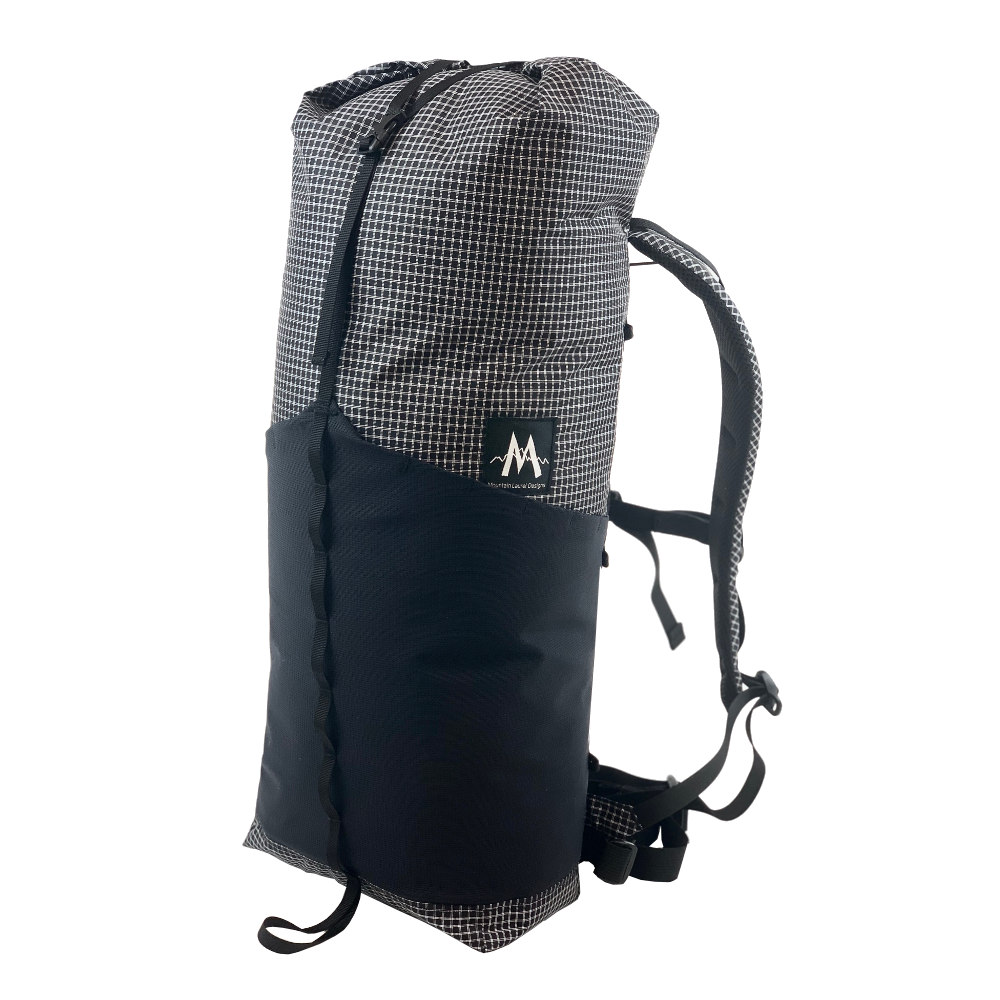
I think MLD makes the best shoulder straps in the business. The size of this pack is great for day hikes and has room for use as a light travel pack or for lighter overnight trips in the woods. The stretch wraparound exterior pocket is a great solution for flexible storage on the go. I thought I might not like having everything in one big pocket but it’s great for water bottles, snacks, a collapsed trekking pole or shell. – Matthew King
Nunatak Bears Ears Backpack
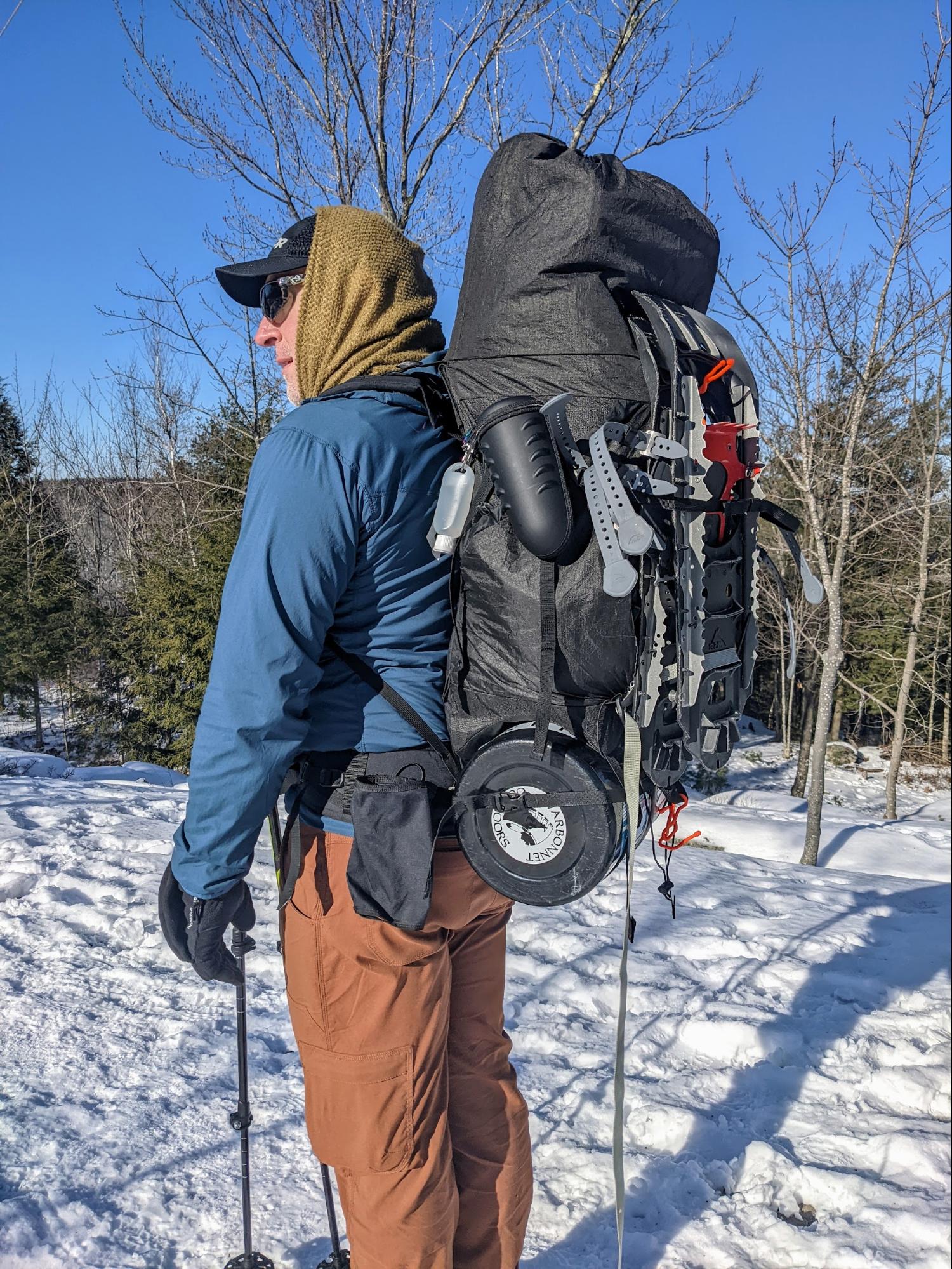
Backpacking in areas where bear canisters are required, the Nunatak Bears Ears line of packs provides comfortable “outside the pack” carry. I have carried up to 35 lbs in the pack without any discomfort. Additionally, this canister attachment option does not interfere with accessing the rest of your gear as opposed to lashing the canister to the top of your pack or placing it inside your pack. And finally, the water bottle pockets are highly accessible without interfering with hipbelt pockets or side pockets. – Iago Vazquez
- Learn more about the Nunatuk Bears Ears Backpack in the Backpacking Light Gear Shop.
ULA Ohm Backpack
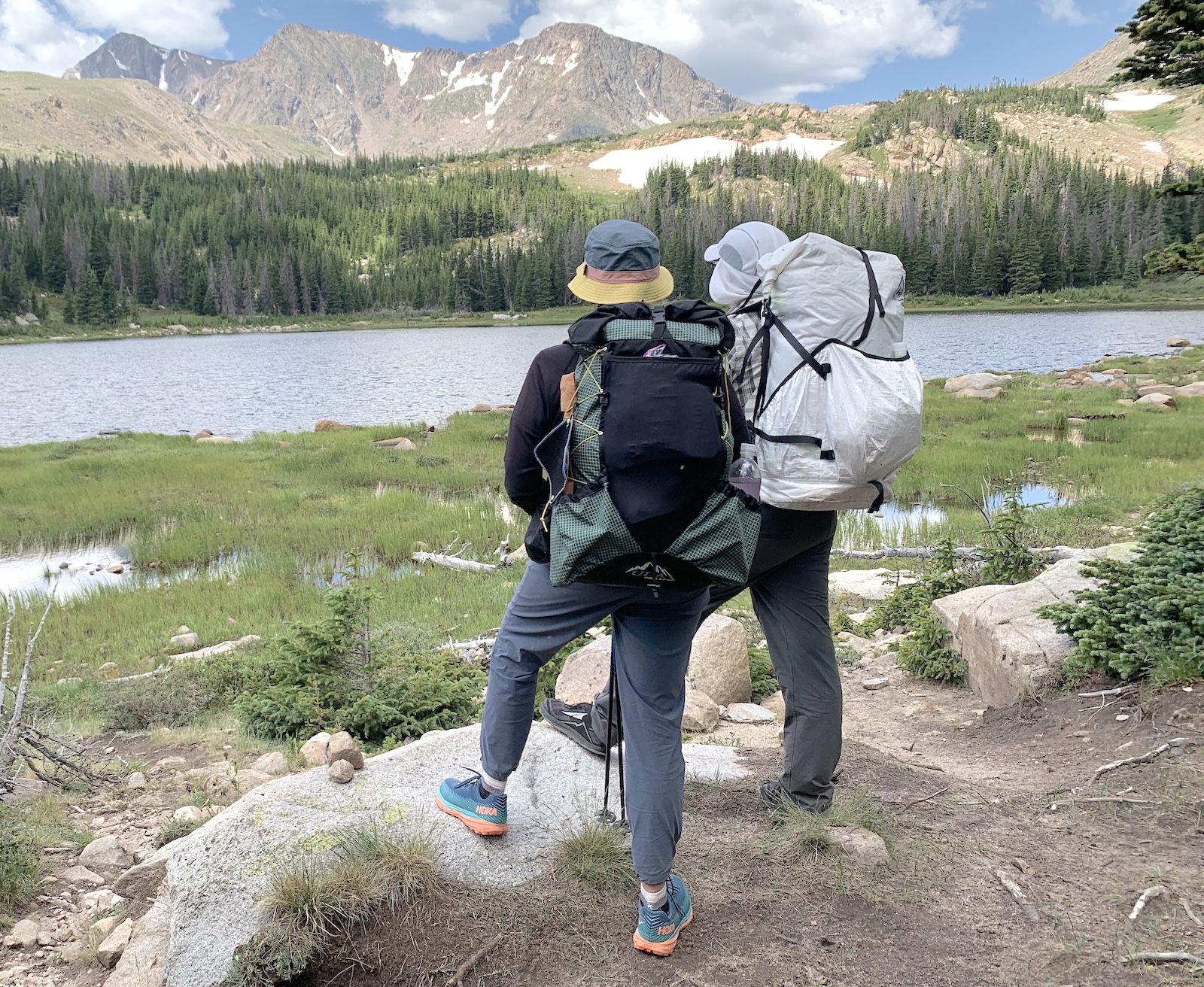
Unlike most Ultra-fabric packs, the ULA Ohm’s ripstop is highly water resistant. My gear survived torrential rains during a summer backpacking trip into Rocky Mountain National Park this summer – without a pack liner. Fine fit adjustments and a supportive but pliable frame make this one of the most comfortable packs I’ve worn, given my spondylolisthesis. – Stephanie Jordan
- Learn more about the ULA Ohm Backpack in the Backpacking Light Gear Shop.
Zpacks Ultralight Multi-Pack
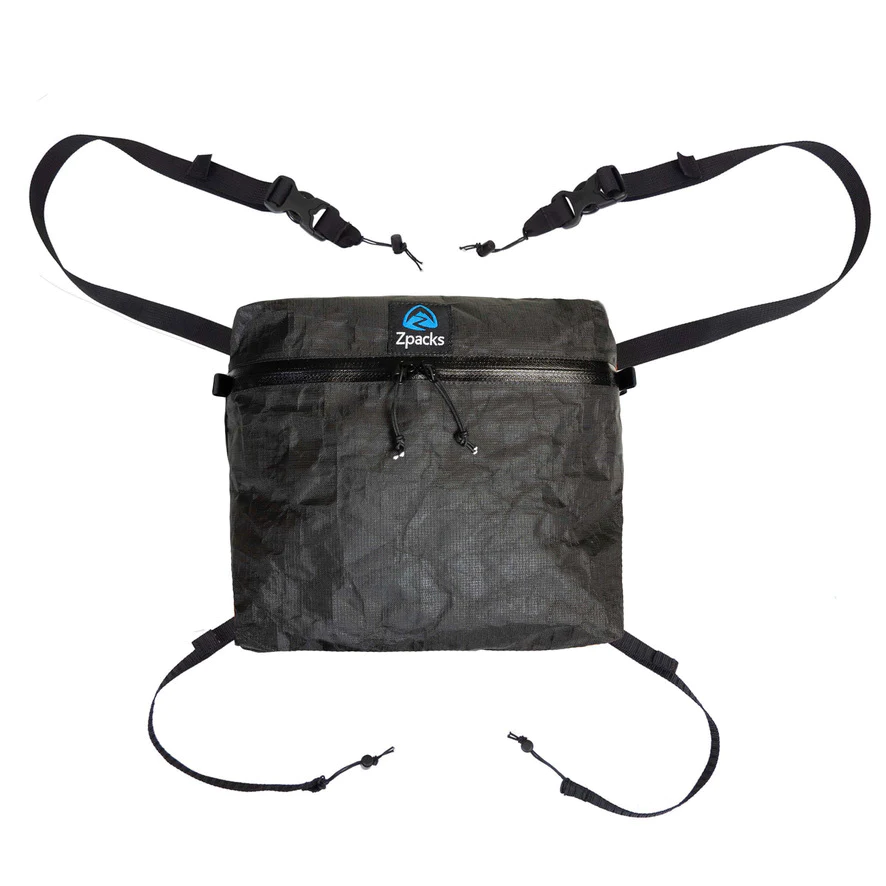
It is invaluable to keep a number of small pieces handy. I had no problem attaching the Zpacks Ultralight Multi-Pack to other brands of packs as long as the shoulder straps had some loops or daisy chains. Initially, I was clipping all four points, but eventually, I just decided to attach two on one side and the top one on the opposite side. This simplifies putting the backpack on and taking it off. – Iago Vazquez
- Learn more about the Zpacks Ultralight Multi-Pack in the Backpacking Light Gear Shop.
Clothing Systems
Arc’teryx Proton LT Hoody

The Arc’teryx Proton LT jacket has been my favorite in the past year because it has a very large range of comfortable temperatures and activity levels. On warmer and drier trips, this is my only extra layer, replacing both a fleece and a rain jacket; on colder or wetter trips, it layers well with other gear and keeps me comfortable without sweating. – James Montavon
- Learn More about the Arc’teryx Proton LT Hoody in the Backpacking Light Gear Shop.
Enlightened Equipment Copperfield Windshirt
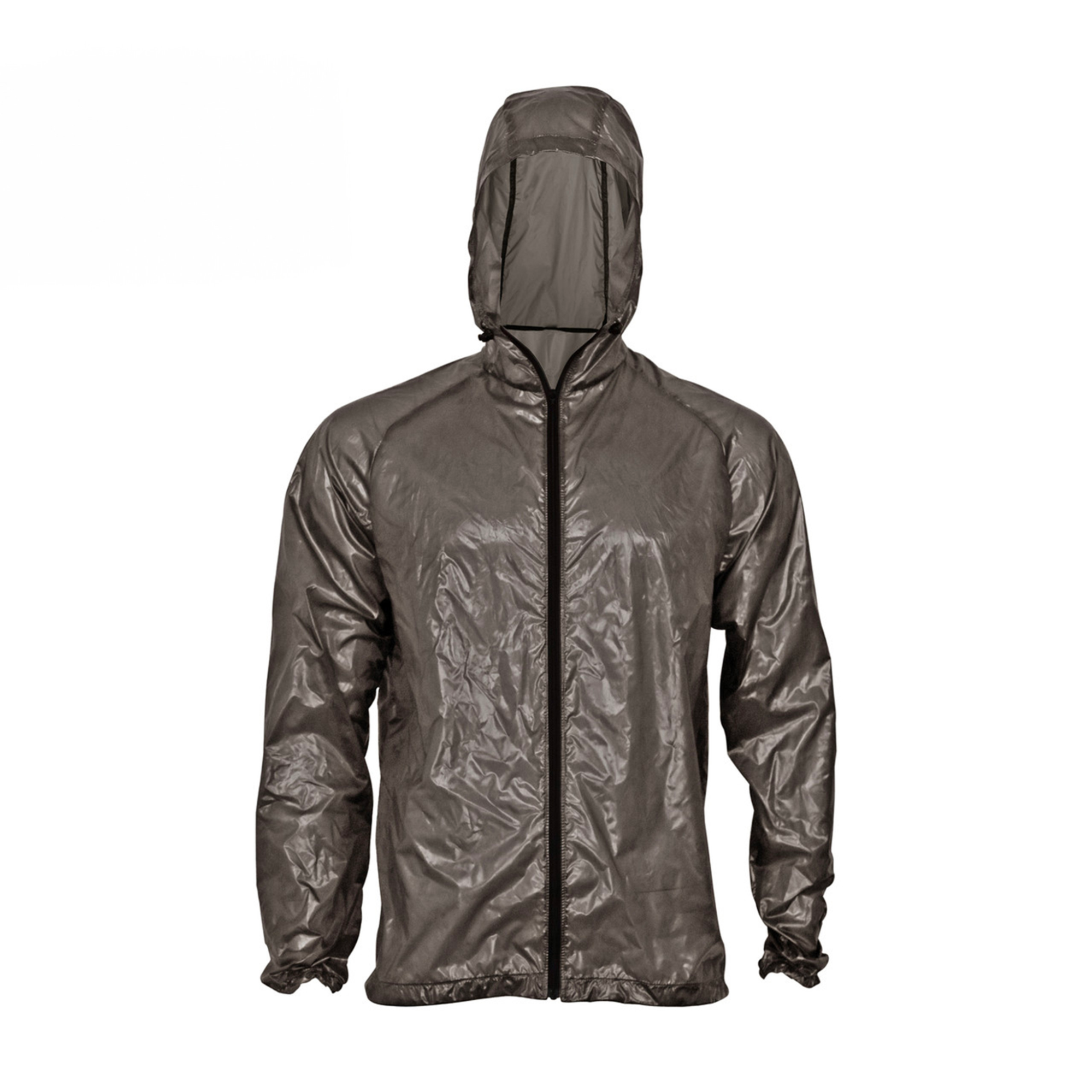
The Enlightened Equipment Copperfield Windshirt is a super ultralight 2 oz windshirt that squishes to the size of a tennis ball in my pack. I carry this in the Summer just in case. Extremely high MVTR and moderate CFM for an excellent balance of breathability and wind resistance. – Bill Budney
- Learn more about the Enlightened Equipment Copperfield Windshirt in the Backpacking Light Gear Shop.
Enlightened Equipment Rain Wrap
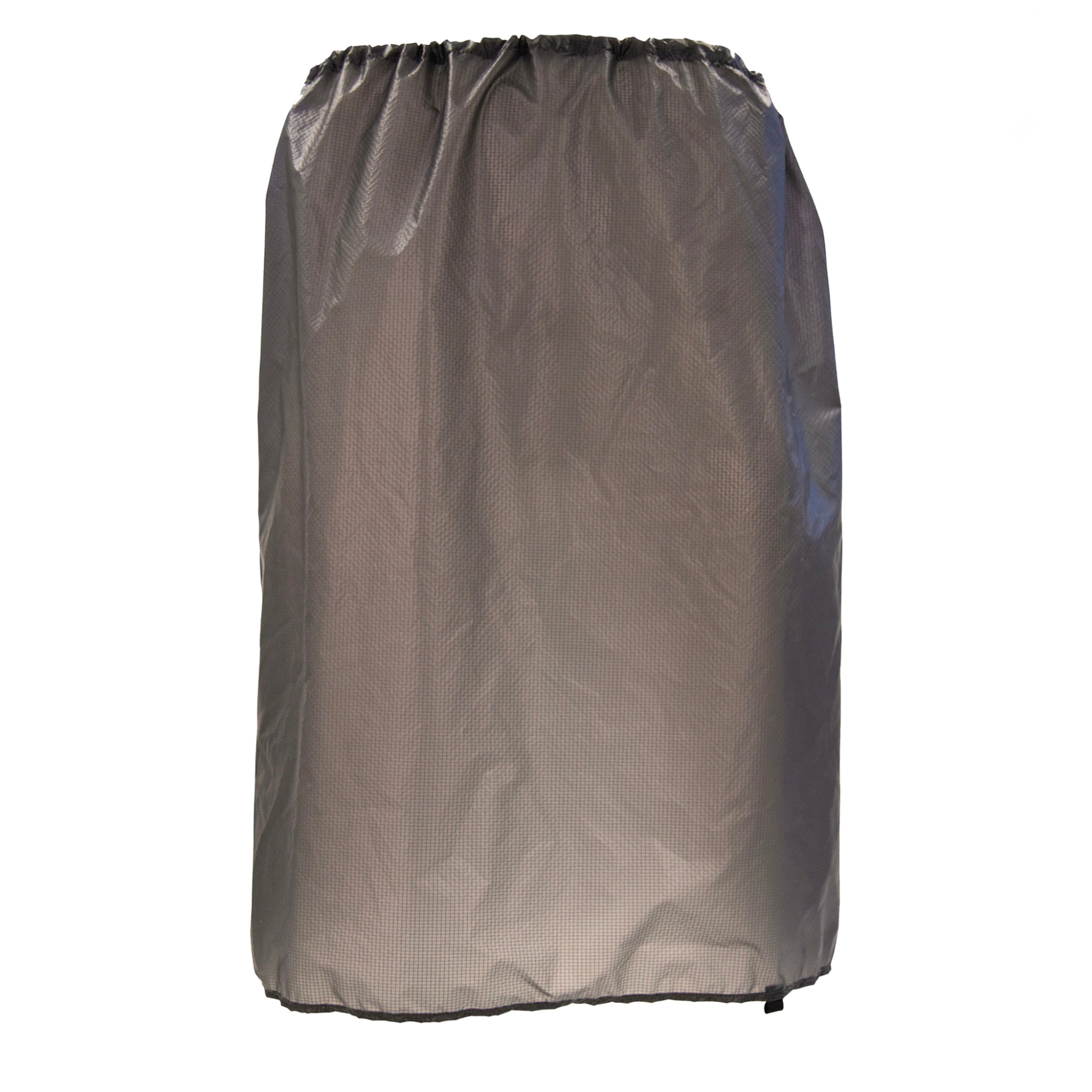
Looking like a cross between a shopping bag and a kilt, this nifty piece of kit carries the dual benefits of keeping your base weight low while enabling you to reenact your favorite scenes from Braveheart. If you’re a lightweight hiker who favors shorts over pants and quick-drying trail runners over boots, the rain wrap serves as a perfect compliment, covering that portion which would become waterlogged while hiking through rain and nothing more. – Isaac Simons
- Learn more about the Enlightened Equipment Rain Wrap in the Backpacking Light Gear Shop.
Goosefeet Gear Down Socks
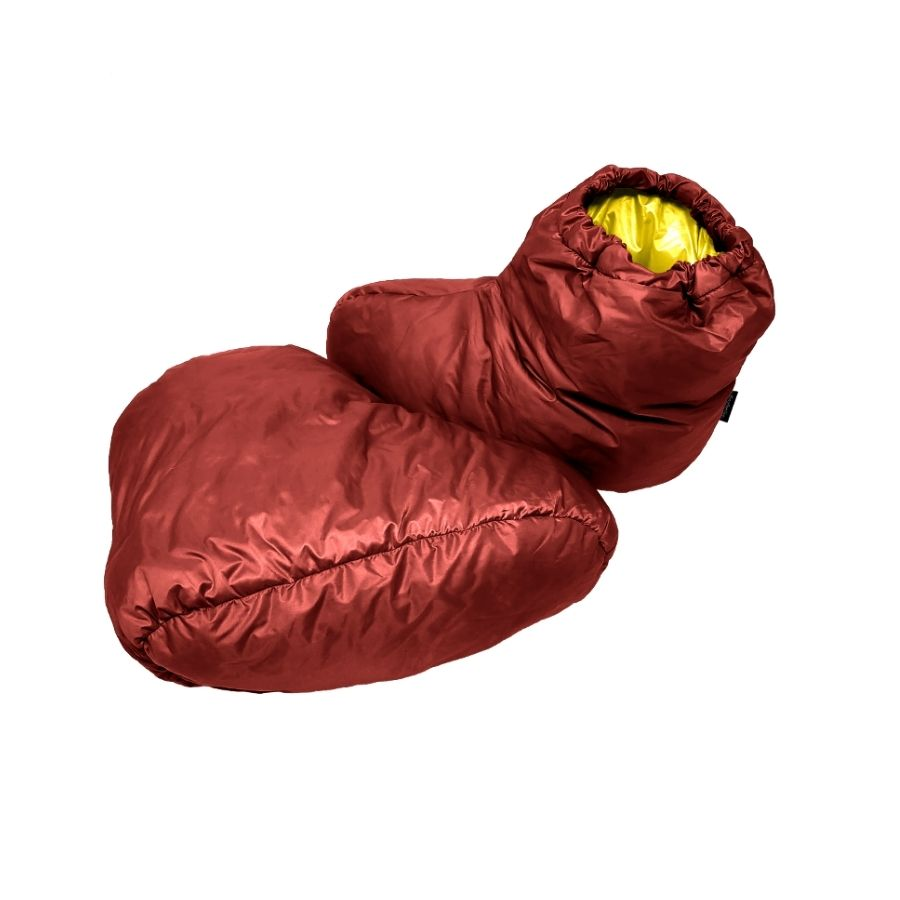
These were a real surprise. I purchased them to try out and to keep my feet warm on the trail. They do that wonderfully, but they are so comfy I wear them at home too. Who knew my feet had been looking for these little gems. As a bonus and with the elastic ankle band, they essentially disappear when packing. Stuff them into your sleeping bag/quilt so they are there when you need them, or into one another, or a tiny stuff sack, like the one provided by GFG. Either way they pack down so small you will not even know they are there. – Jeff de Graffenried
- Learn more about the Goosefeet Gear Down Socks in the Backpacking Light Gear Shop.
Kōkatat Swift Entry Dry Suit
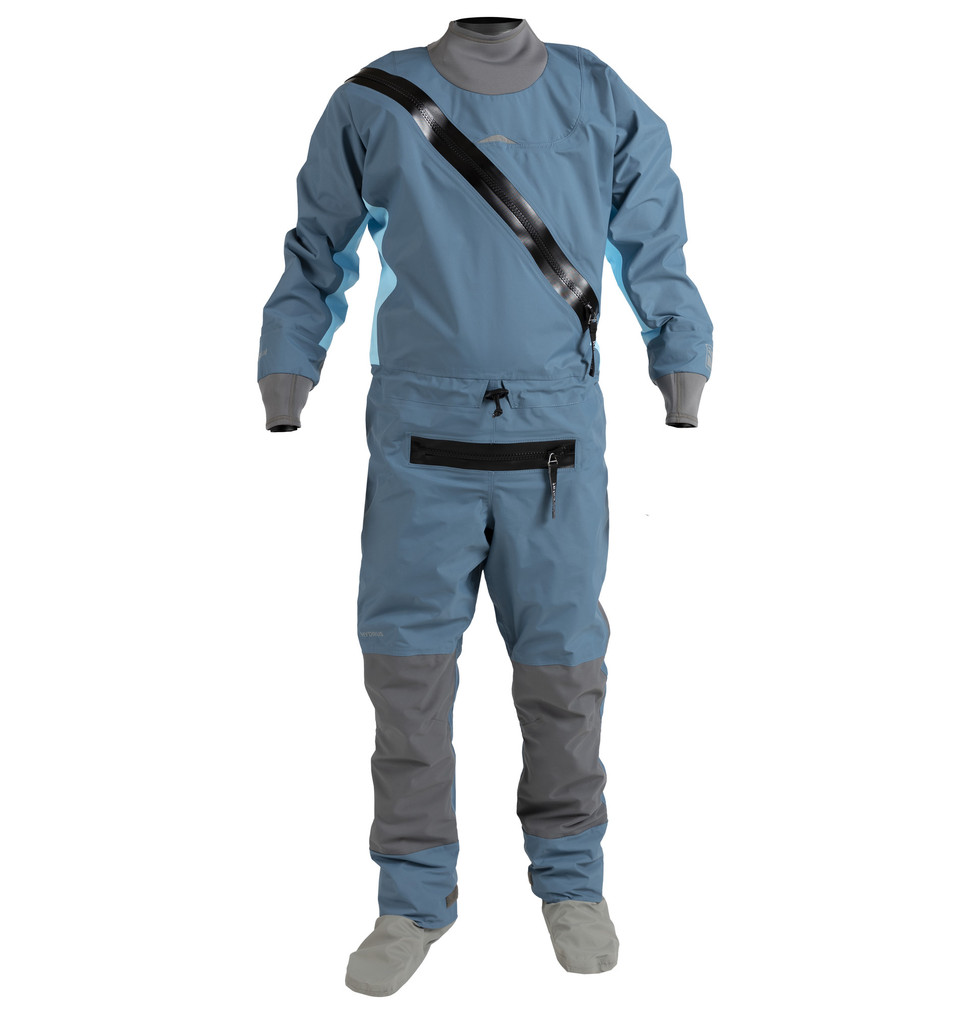
Solid protection from cold air and water in a 2+ pound package. This light drysuit seems ideal for UL folks who are hiking a bunch just to get to the river. They make a version with socks, but I prefer the versatile no-sock version because it allows me to wear my hiking shoes on the river. Layer an alpha fleece underneath to stave off the Covid chills when paddling through remote parts of Alaska. – Ben Kilbourne
Melanzana Micro-Grid Hoodie

Melanzana Micro-Grid Hoodie. Photo Credit: Melanzana
Melanzana is famous for long wait times and a purchasing process that requires scheduling in-person appointments months in advance at their Leadville, CO store. We happened to drop in one day, and I found a Melanzana Micro-Grid Hoodie in my size and color on their (small) rack of “in-stock” items. My favorite features are the high-rise neckline, hand-warming kangaroo pocket, long length, breathable grid fleece, and the fact that this incredibly successful company employs dozens of people in a tiny mountain town. – Stephanie Jordan
- Learn more about the Melanzana Micro-Grid Hoodie in the Backpacking Light Gear Shop.
Mountain Hardwear Airmesh Half-Zip
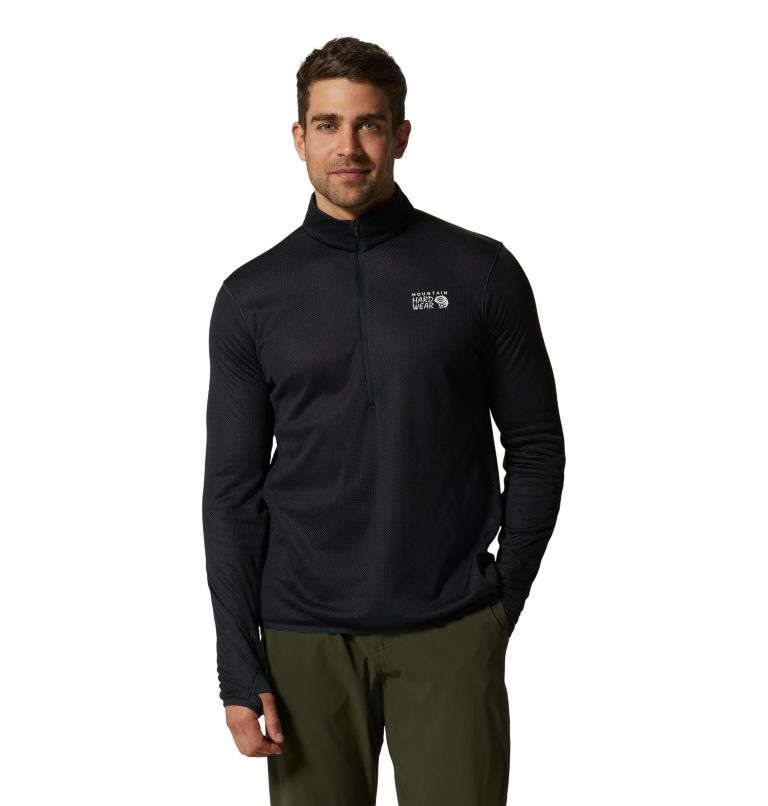
I’ve been wearing the Mountain Hardwear Airmesh Half-Zip everywhere. Looks great around town and performs well in a wide variety of conditions on the trail. I prefer the zipper for dumping heat when it gets too warm, and don’t need yet another layer with a hood. I might also like a Senchi Designs Alpha 90 Crewneck with Half Zip if I could get one (for most of the same reasons). – Bill Budney
- Learn more about the Mountain Hardwear Airmesh Half-Zip in the Backpacking Light Gear Shop.
Mountain Hardware Kor Airshell Full Zip Jacket
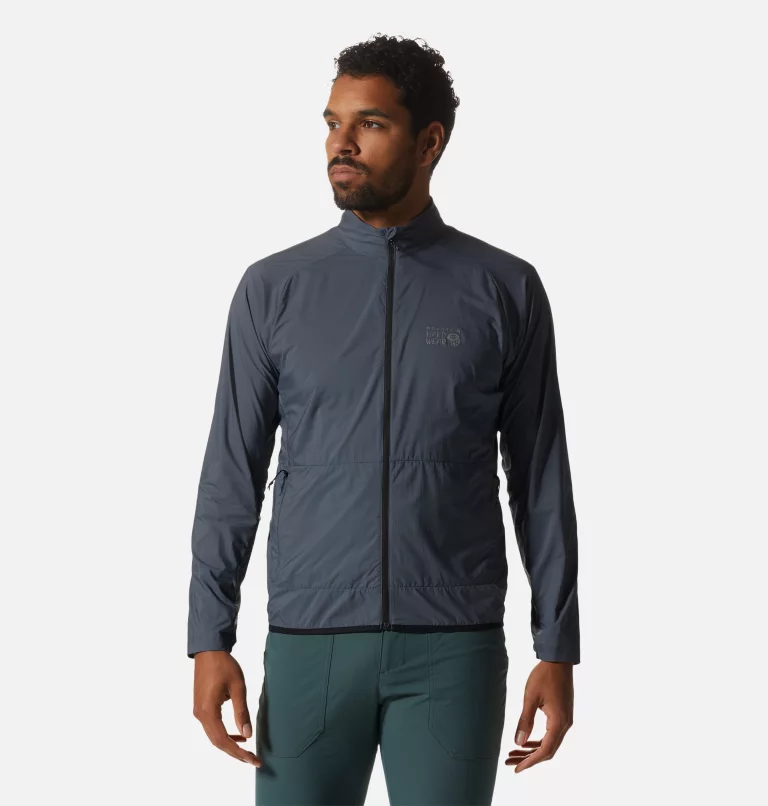
The Mountain Hardware Kor Airshell Full Zip Jacket is perhaps the best lightweight windshirt this year. Made of Pertex Quantum Air, it has extremely high MVTR and moderate CFM: The ideal combination for excellent balance of breathability and wind resistance. Weighs 5 oz, which is 2 oz less than the Black Diamond Alpine Start (which I also like). – Bill Budney
- Learn more about the Mountain Hardware Kor Airshell Full Zip Jacket in the Backpacking Light Gear Shop
North Face Summit L3 Down Hoodie
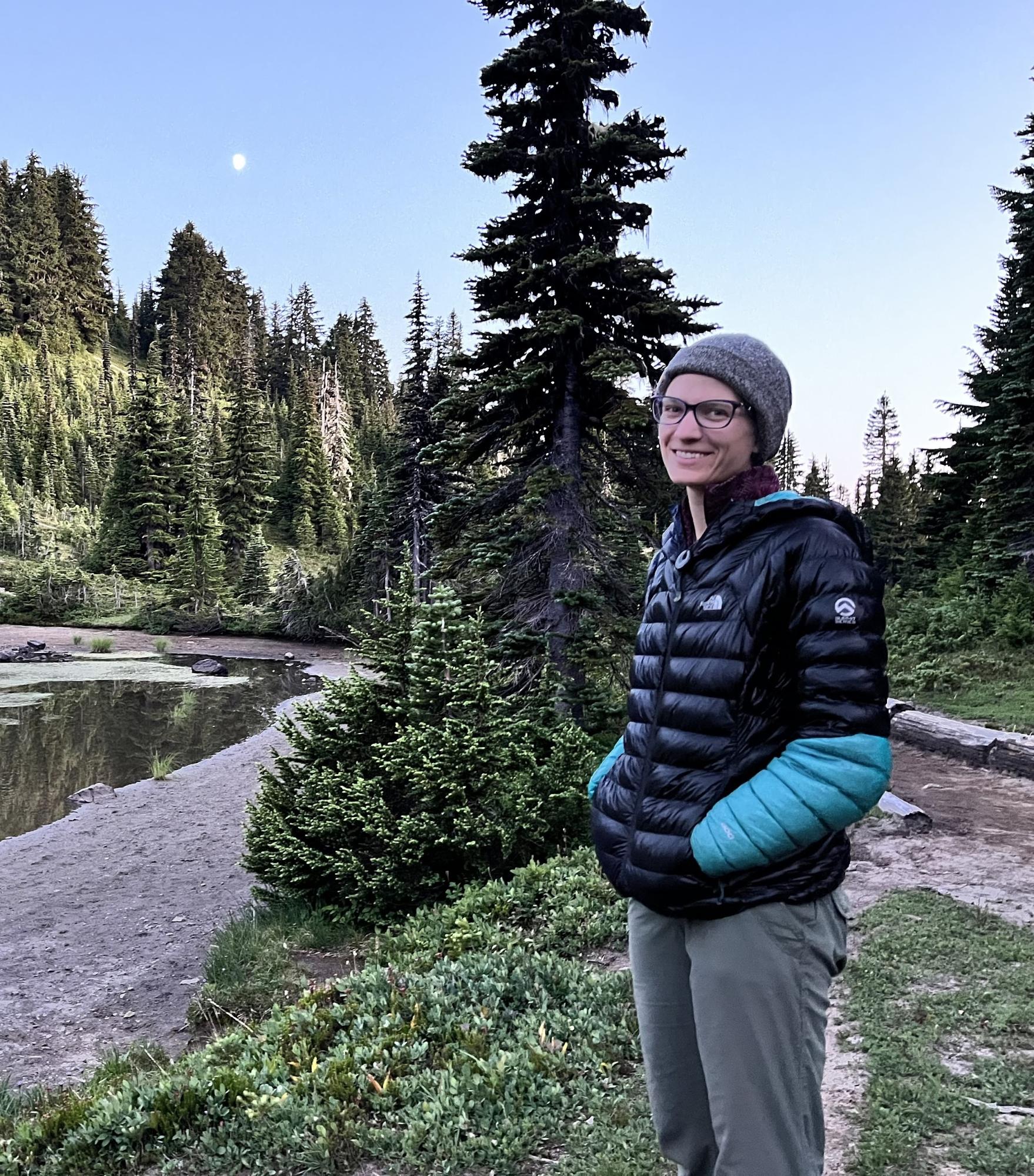
While this jacket looks a bit shiny (I usually go for a more matte look), it more than makes up for it in coziness. I love that I can pull it down past my hips for added warmth, it has a nice deep hood, and that it fits closely for no drafts. – Anna Swarts
Outdoor Vitals Satu Adventure Pants

These pants are my go-to pants for anything that’s too cool for hiking in shorts. I like the big side vents for when I want to spill heat quickly, and the cinch cords at the bottom of the pant legs can hook on to my bootlaces and make a decent seal to keep out snow. They also look nice enough that I can wear them in many settings. I took my tan pair as my only pants for a conference in London, then used them to hike in Iceland on the way home! – James Montavon
Rab Downpour Eco Waterproof Jacket
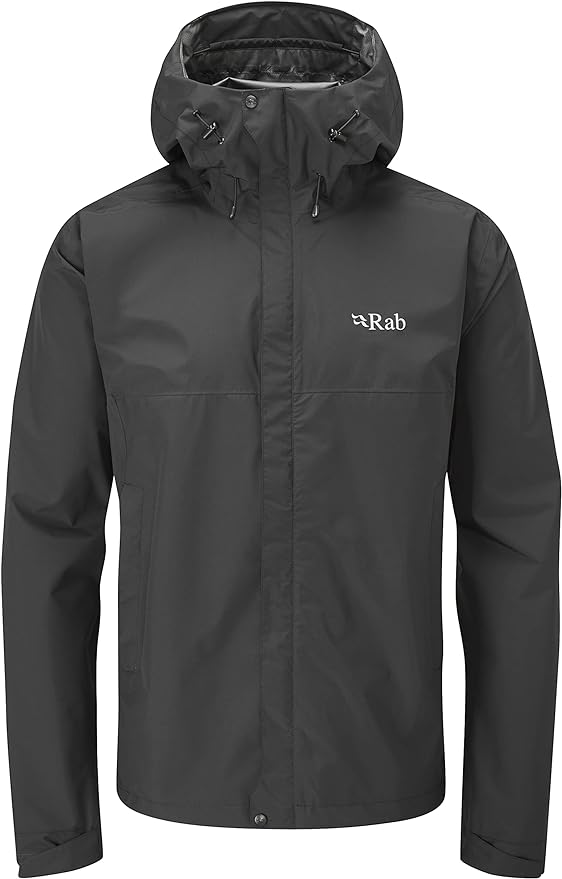
Whether it’s hiking during a thunderstorm in the Colorado Rockies, walking through the remnants of a tropical storm on the eastern seaboard, or hiking through sleet and snow in New England, this jacket has kept me dry regardless of the conditions. Plus, it’s manufactured from 77% recycled material and is manufactured without using long chain fluorocarbons for a more environmentally friendly rain jacket! – Chase Jordan
Patagonia Tropic Comfort Natural UPF Hoody

I know this was recalled but I wear a hat under it anyways. I haven’t found anything cooler or more comfortable in the desert where I do most of my hiking. Love the fit, the hood is great and the long sleeves that cover my hands. I’m so happy to have three of these. – Matthew King
- Learn more about the Patagonia Tropic Comfort Sun Hoody in the Backpacking Light Gear Shop
Editor’s Note: While the 2021 model of the Patagonia Tropic Comfort Sun Hoody was recalled as independent testing provided inconsistent data and was unable to be certified with a UPF rating using the European UPF standards, the currently released models are not under recall and are certified to the European standards.
Timmermade SUL 1.5 Down Sweater
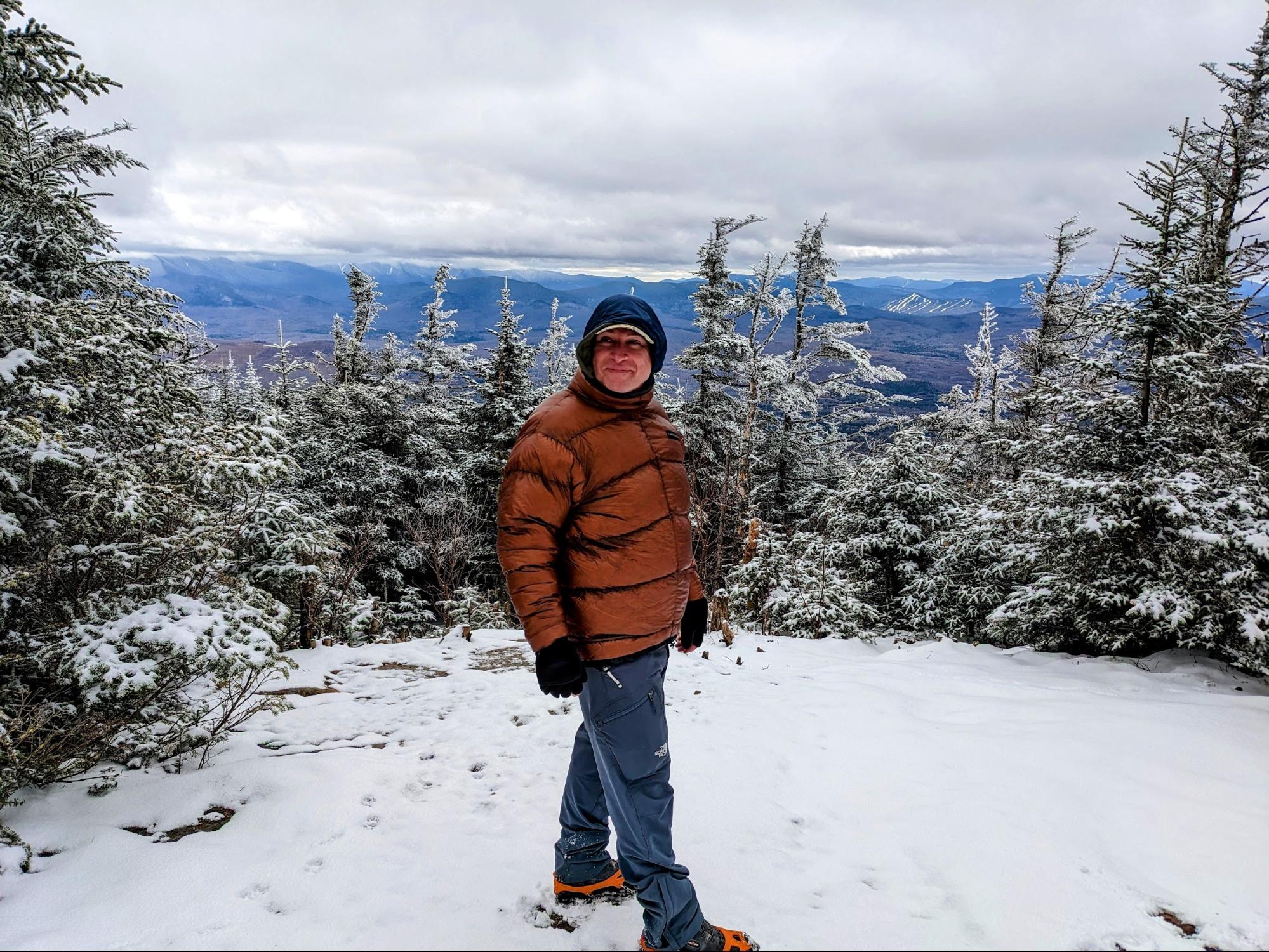
The warmth/loft, weight and price ratio is outstanding. As an added bonus, you can have it custom tailored to your body type. While I often leave it home in the summer, it has gone on every cold weather trip. One may notice the lack of features. No zippers, no hoods, no pockets. This is intentional in order to enhance the performance over more popular urban fashion oriented pieces. Pockets could be detrimental, since stuffing pockets with heavy stuff can diminish loft. If I need a hood in camp, I just grab whatever I brought to insulate my head while sleeping in my quilt, which often is a beanie or down hoodie. Also, I prefer having my head insulated independently from my body, since it gives me more options for thermoregulation. And lastly, a zipper may make it easier to put the garment on and take it off, but puffy coats glide easily over other layers, so I do not particularly miss the zipper and I prefer the weight reduction of not having a zipper, plus draft baffle and zipper slider protection. If I need to vent via a zipper, I probably do not need heavy down insulation. Personally, it is the perfect insulating piece. – Iago Vazquez
- Learn more about the Timmermade SUL 1.5 Down Sweater in the Backpacking Light Gear Shop.
Timmermade SUL Waterbear Hood

When the weather turns cold, and bedtime arrives, I often sleep poorly from breathing frigid air. I found the famous Sockel on Backpackinglight, made one, and used it for some time. This year, I purchased a Climashield Waterbear hood. The front of the Waterbear hood tightens to form a small opening that can encircle your mouth and nose. When positioned satisfactorily, it warms incoming air. A very clever feature is the portion of the hood that tightens around your nose and mouth—insulation in this area is enclosed by mesh rather than a solid polyester fabric. The mesh supports rapid drying of the moisture from your breath that condenses on the cold hood surfaces. This product is not without drawbacks. The drawstrings are short, thin, and difficult to tie and untie, especially in the cold. The tiny snaps that close the hood around your neck are also tricky to use. I added a cord lock to control the strings and some Velcro to replace the snaps. I wish the hood opening could be secured so the Waterbear could be worn around camp without covering my eyes. Despite these design flaws, I have found it can work effectively, and the quality of my sleep has improved. – Stephen Seeber
Tough Outdoors Bug Net Jacket and Pants
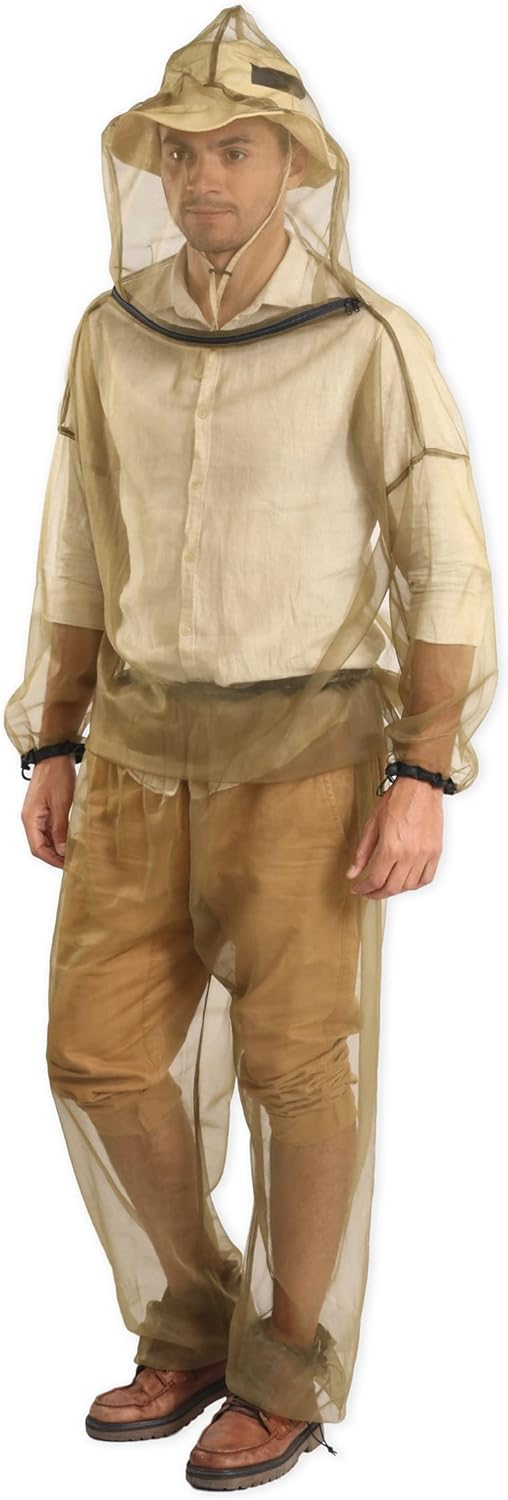
Listen, you’re going to stand out. But I promise that the deeper into mosquito country you get, the more people will revere you as a complete genius. Over the summer, this Bug Suit let me sit outside, cook dinner and clean everyone’s dishes while my guests hid from the mosquito hordes in their tents. It’s reusable and lightweight, and it didn’t pollute my body or the environment with toxic DEET. I’ve even used it as an insulation layer under my rain pants and as a makeshift sun shirt. I don’t care what anyone says, I am absolutely obsessed with it. – Sarah Bennett
Cooking, Foot Storage, and Hydration
Backpacking Light Tritan Bottle

I’ve been trying to source a thin-walled Tritan bottle for years. I wanted something a little lighter and a little larger than a 16-oz Nalgene, and with a narrower mouth for easier glugging. This bottle size is perfect for me, and it fits well into all of my shoulder strap pouches. No more Smartwater bottle waste for me. – Ryan Jordan
- Learn more about the Backpacking Light Tritan Bottle in the Backpacking Light Store.
Trail Designs Caldera Cone Sidewinder Ti-Tri
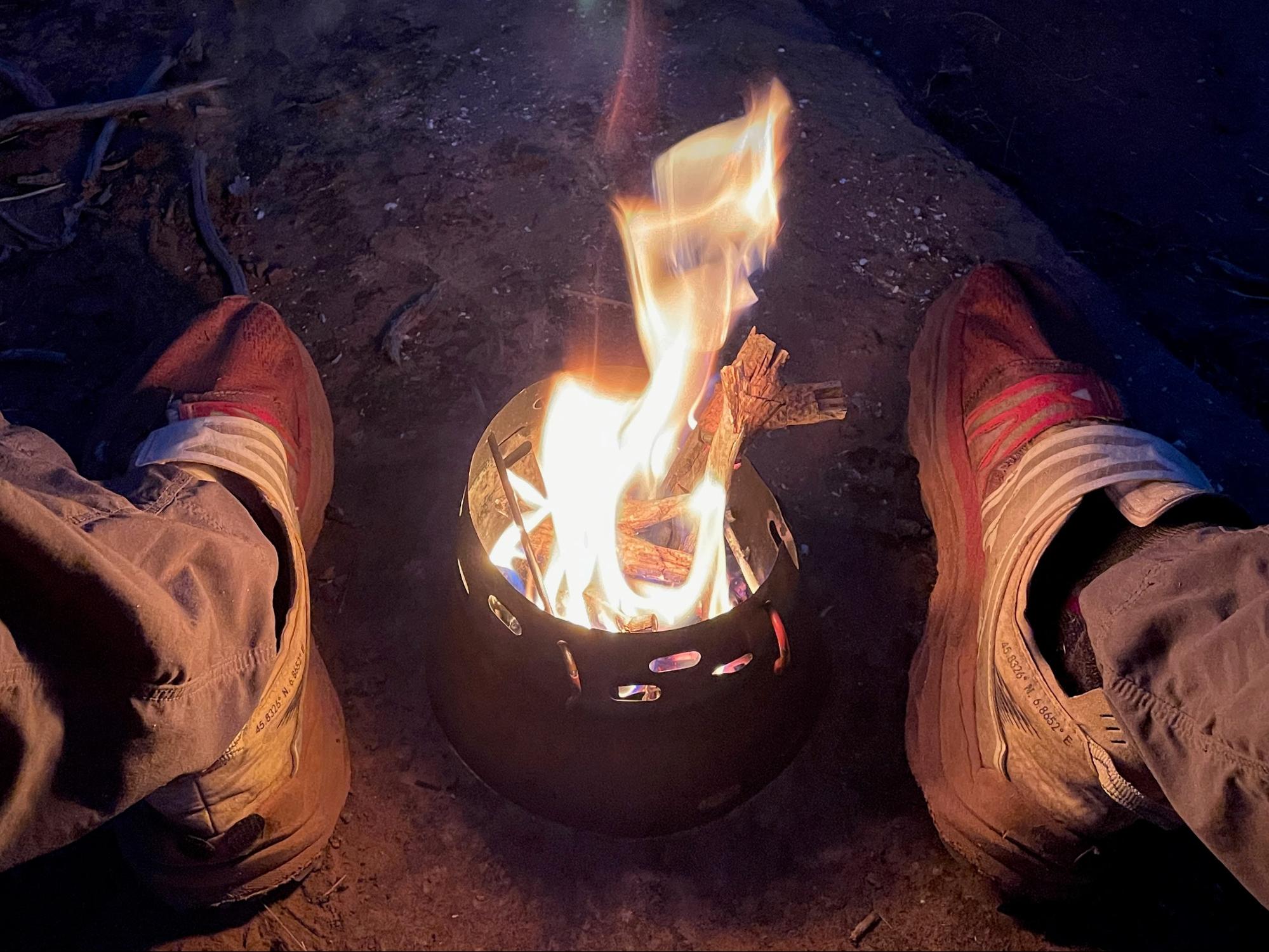
The design of this backcountry classic has changed hardly at all in the decade-plus since I acquired mine. And why should it? The Caldera Cone system is versatile, light, compact and efficient. It is a masterpiece of elegant design and function. The Caldera Cone enables you to cook with alcohol, Esbit tablets or twigs. It can be ordered to fit a wide variety of pots from 0.6 to 2.0 L capacity. The components are stowed inside the pot, and the whole outfit will weigh in at 7 – 11 oz (200 – 300 g) depending on configuration.Sure, canister stoves are more powerful and convenient. I typically take my Soto Amicus on long hikes where I’ll be doing 20+ miles per day and resupplying. Canisters are now more readily available than fuel alcohol in trail towns. But for shorter trips, where making miles is not such a priority, I usually prefer the quiet and aesthetics of a well-designed alcohol stove system. I don’t mind waiting an extra three minutes for my water to boil while I watch the sun set and listen to birds sing. And I’ve especially come to appreciate the option of a wood fire in shoulder season. A small fire on cold early nights means I can spend another hour or two outside before retiring to the confines of my tent. With its gasifying insert and titanium ash pan, the Caldera Cone does not scorch the ground and it burns twigs down to a fine ash that can be dispersed easily. The stove enables something pretty close to a true LNT campfire.The Caldera Cone system is not the lightest, most powerful or most efficient stove system. But in the right context it is perhaps the most satisfying. – Drew Smith
- Learn more about the Trail Designs Caldera Cone Sidewinder Ti-Tri in the Backpacking Light Gear Shop.
Evan Williams Whiskey
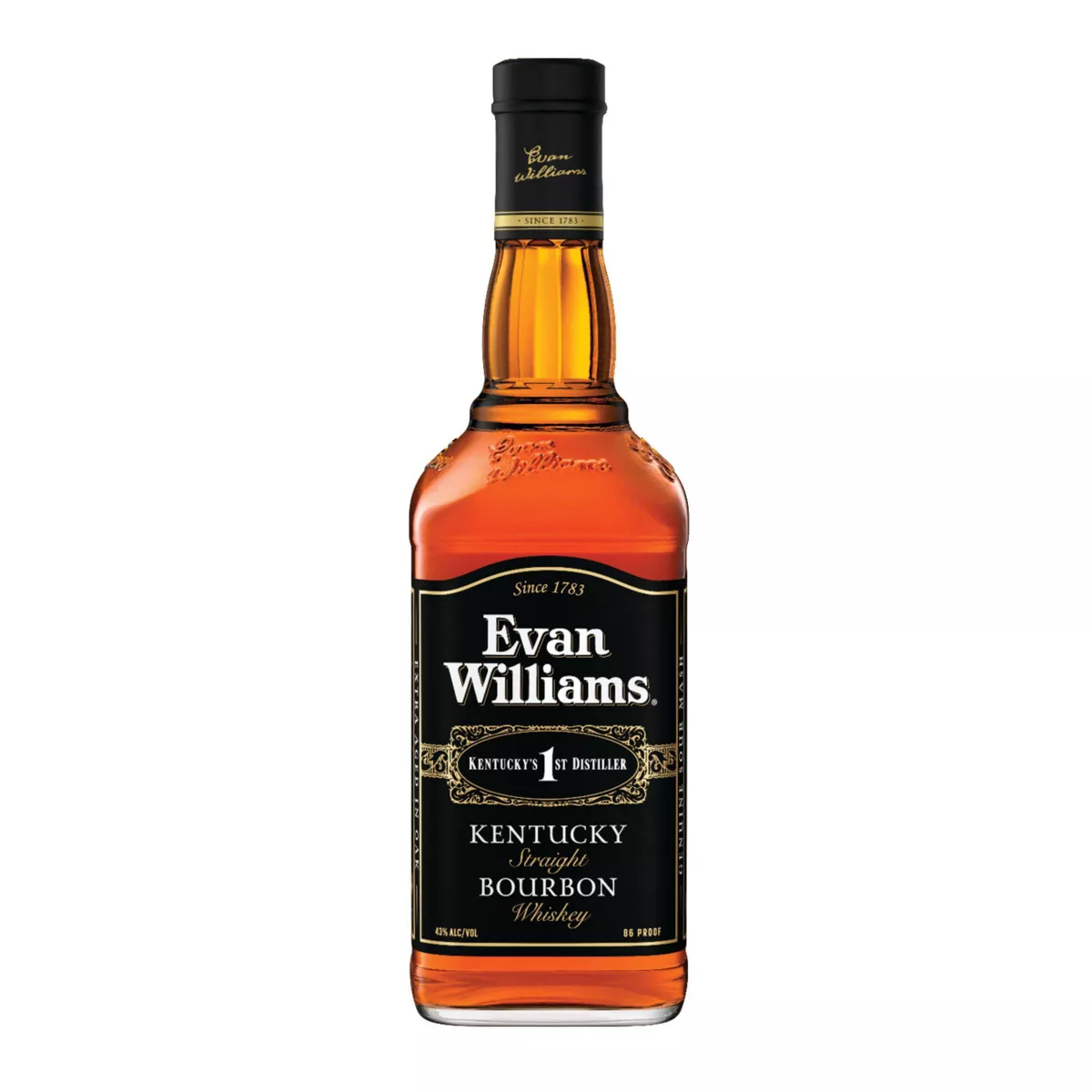
Many people consider whiskey to be a heavy luxury item incompatible with hiking fast and light. This belief is mistaken. An ounce of whiskey provides 90-100 calories of food energy. It is only slightly less energy-dense than dry pasta (106 Cal/oz). To be sure, whiskey calories are the emptiest of empty calories. But when you are out on a hike, especially a long hike, empty calories are a positive good. Whisky, unlike pasta, provides a number of benefits beyond calories. A few sips in the evening are an excellent way to put a mellow end to the day and facilitate sleep. If you want to make new trail friends, there is no better opener than offering a shot to your campsite neighbor. Whisky can also be pressed into service as a solvent, a disinfectant or a fuel, although it is not really very good at any of these tasks. Whisky is at its best when ingested internally in moderate amounts in beautiful outdoor settings with convivial companions. No one will mistake Evan Williams for a top-shelf whiskey. But it is not at all bad, and is in fact better than many nationally advertised brands. It is inexpensive and commonly found in trail town stores. Best of all, it comes in a lightweight unbreakable plastic bottle which can be reused and repurposed. If one were to design a whiskey specifically for hikers, it would look like this. – Drew Smith
Six Moon Designs Ursack Aluminum Liners
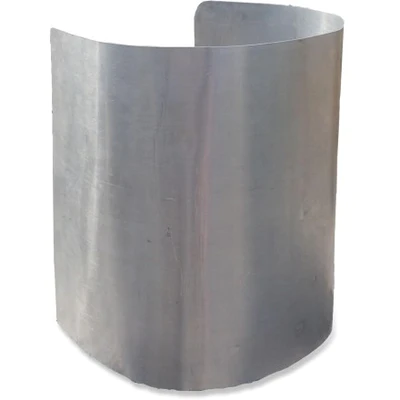
Ursacks are by far my favorite way to store food and smellables in the backcountry. With Rocky Mountain National Park allowing Ursacks only with the aluminum liner, it’s a no brainer to add these to my kit. – Chase Jordan
Footwear
Brooks Cascadia 17 Shoes with Superfeet All Purpose Support Medium Arch Insoles
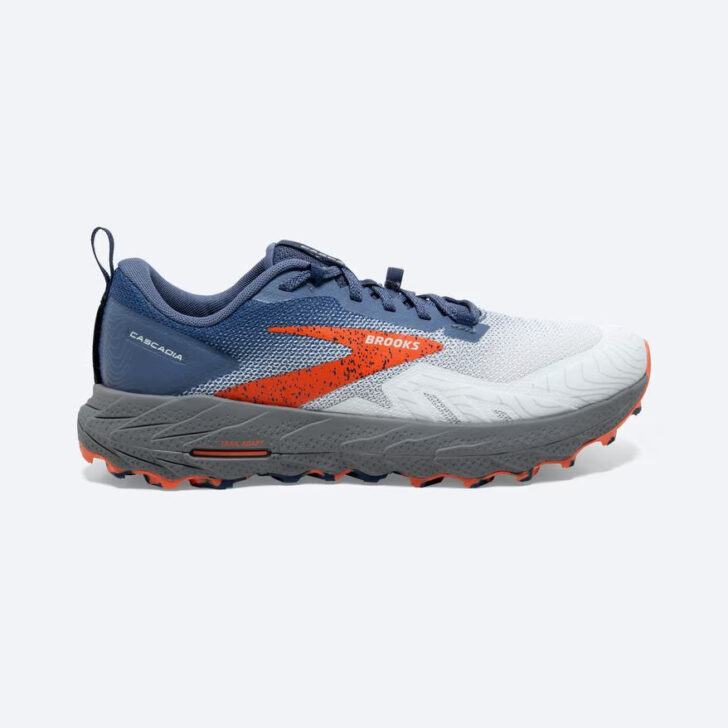

I have found something that works for me and it still works. This is a magic combination where my feet are comfortable when hiking. Quick drying, reasonable durability, good grip… I hope everyone can find a footwear setup that works as well as these do for me. – Matthew King
- Learn more about the Brooks Cascadia Running Shoe in the Backpacking Light Gear Shop.
Inov-8 Trailfly G 270 V2

While such ubiquitous brands as Altra and Topo Athletic boast the California King of toe boxes, there are those backcountry outings which call for a narrower margin of error. Class 3 scrambling, for instance, as well as downhill trail running, benefit from a tighter fit and increased sensitivity to rapid directional shifts. For this, I’ve become a firm believer in Innov8, a UK-based shoe manufacturer. Their Trailfly G270 V2 boasts not only more letters and numbers than the average military fighter jet, but incredible traction, flawless responsiveness, and hardly more weight than you’d find in a bedtime slipper. The consequence of this, however, is that after a long day in the mountains your feet might feel a bit less like they’ve been lounging at the spa than they would with other brands. Still, when the terrain demands it, the trade off is well worth it. – Isaac Simons
- Learn more about the Inov-8 Trailfly G 270 V2 in the Backpacking Light Gear Shop.
La Sportiva Ultra Raptor II Mid GTX Hiking Boots
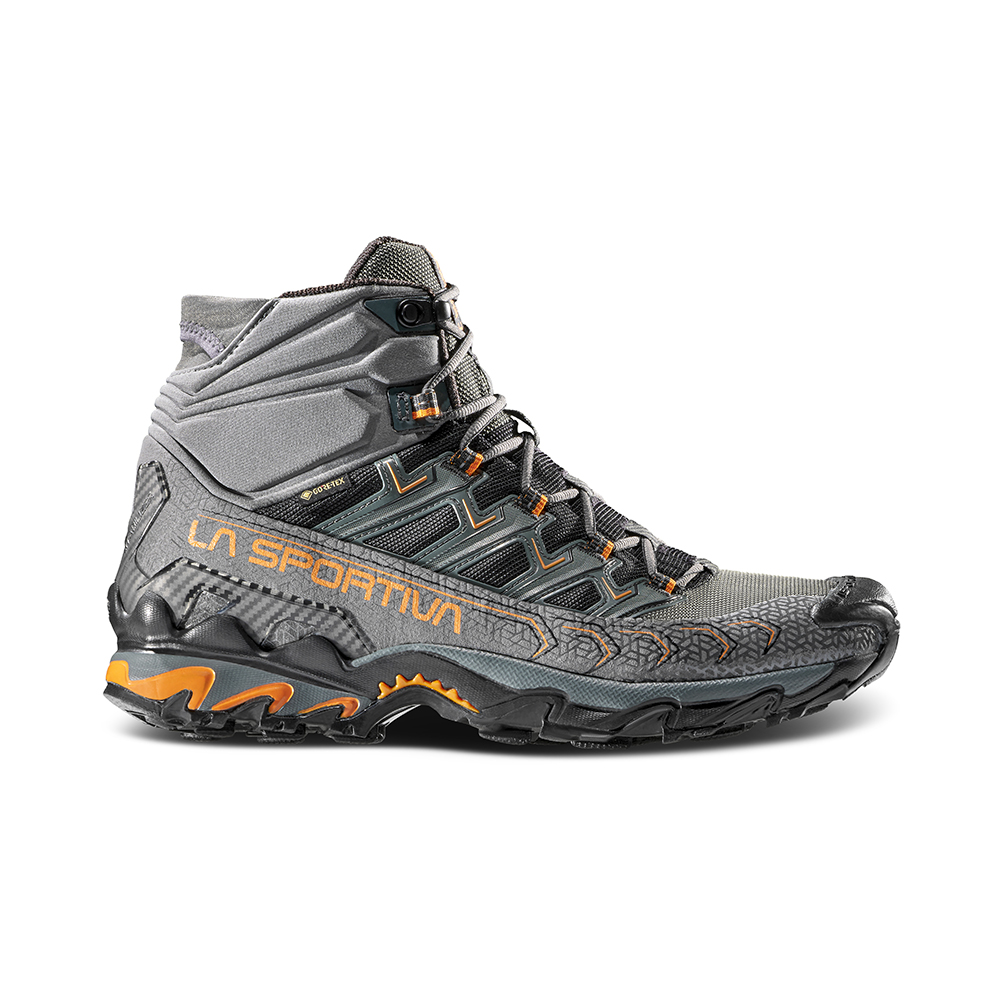
Built on a trail running last, a boot with waterproofing and a sticky sole that “works when wet” is practical footwear for the snowy terrain of winter and sloppy mess of spring. The fact that La Sportiva is releasing a mid height version of the Ultra Raptor GTX in a wide model means I get a much better fit with the multiple sock layers (heavy boot sock + Goretex sock) that I normally wear in the winter. No more cramped toes or grossly oversized boots! – Ryan Jordan
- Learn more about the La Sportiva Ultra Raptor II Mid GTX Hiking Boots in the Backpacking Light Gear Shop.
Topo Athletic Ultraventure 2 Trail Running Shoes
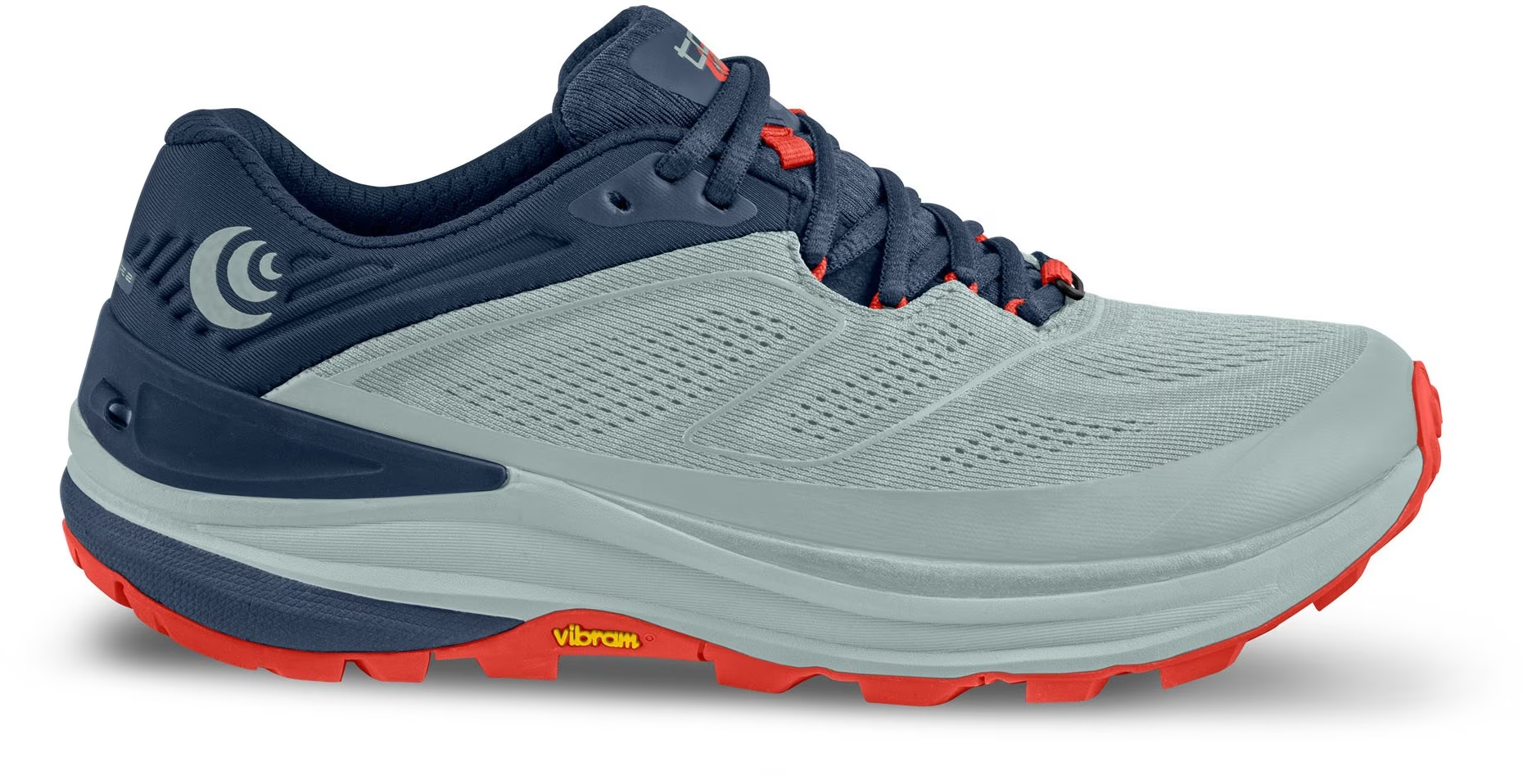
While all trail runner style shoes suffer from a lack of durability, especially when used for cross-country travel and scrambling on talus, I’ve found these to be one of the more long-lasting shoes. They’re great for the types of backpacking trips I do most often and are really comfortable on the varieties of trail and terrain in the Northern Rockies. – Mark Wetherington
- Learn more about the Topo Athletic Ultraventure Trail Running Shoes in the Backpacking Light Gear Shop
Brunton Echo Zoom Monocular
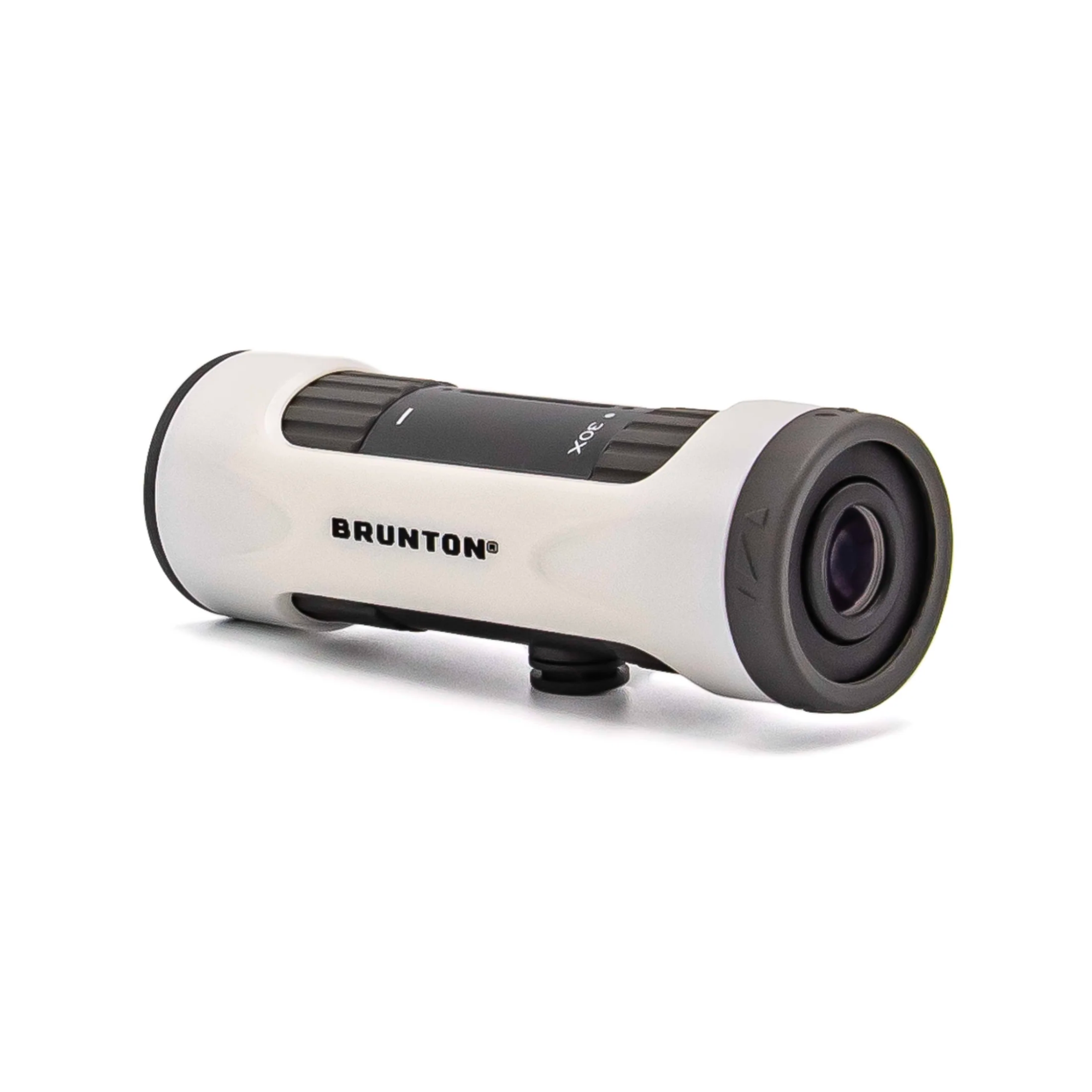
For only 1.8 oz (51 g), I can now save hours of unnecessary walking by identifying potential obstructions several kilometers in advance when exploring unknown and rugged terrain. – Atif Khan
Garmin Epix 2 Pro Watch

After several years, I retired my Garmin Fenix 5XS and replaced it with the Garmin Epix 2 Pro. Functionally, they are quite similar: full ABC (altitude-barometer-compass), GPS (Global Positioning System), and physiological monitoring (heart rate, heart rate variability, sleep tracking, and blood oxygen concentration). However, the Epix represents an enormous performance upgrade for me. I opted for the 51 mm watch diameter, which translates into a nice big AMOLED screen and more than enough battery life for my longest expeditions. The Epix 2 Pro is always on my wrist and is an essential companion for both my training and research. – Ryan Jordan
- Learn more about the Garmin Epix 2 Pro Watch in the Backpacking Light Gear Shop.
Garmin inReach Messenger

I made the switch this year from the Garmin inReach Mini 2 to a Garmin inReach Messenger. I find myself relying less on GPS devices and no longer need GPS navigation in a device other than my smartphone (which is a backup to my primary form of navigation, a map and compass). In addition, the inReach Messenger offers better battery life, reverse charging, and a slimmer, more pocketable form factor. – Ryan Jordan
- Learn more about the Garmin inReach Messenger in the Backpacking Light Gear Shop.
Accessories
Epiphany Outdoor Gear Pocket Bellows
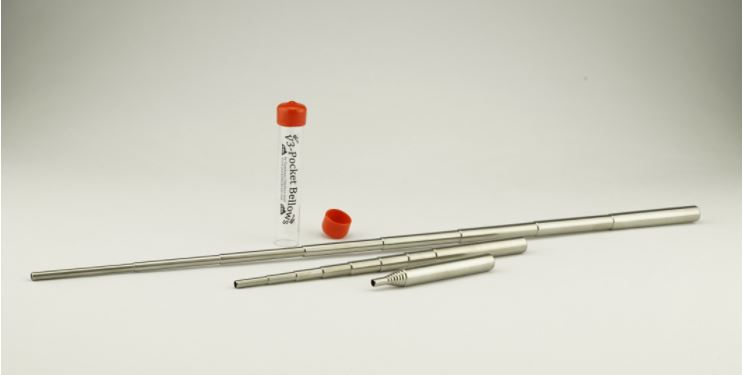
I don’t often make a fire in the backcountry, but when I do, this tiny tube is well worth the weight. It allows you to very precisely deliver oxygen where it’s needed. It works well enough that after accidentally leaving our real bellows at a yurt, we’ve just used this little guy instead for backyard and car camping fires. – James Montavon
Flextail Tiny Pump 2X
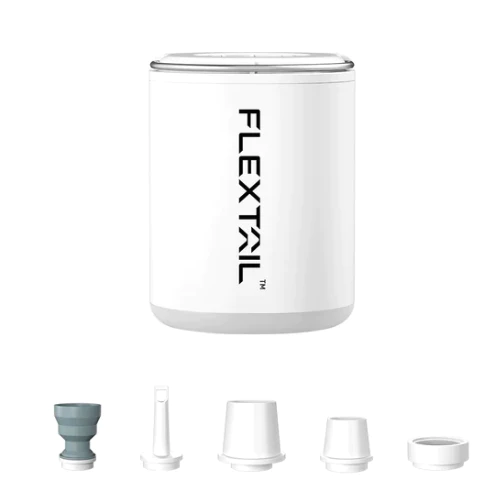
At the end of a long day on the trails, I have never looked forward to inflating my sleeping pad with my overtaxed lungs. So, I was delighted when pump sacks were introduced. Unfortunately, using a pump sack in my tent could be awkward and time-consuming, depending on the attachment mechanism. So, I was delighted when I saw that Thermarest was selling a little battery-powered pump for their sleeping pads. I bought one immediately and never looked back. However, I was unhappy that the pump was slow to fill the sleeping pad, and the pump lacked sufficient power to inflate the pad completely- I had to blow into the partially filled pad to reach full capacity. So, I was delighted when I read about the Tiny Pump 2X. I assumed the 2x meant it pumped faster than what I was using, and it did! It is powerful enough to pump the sleeping pad to full capacity. It also has a LED light so I can hang it up and illuminate all my tasks after the sun goes down. Be careful with the light; it uses more of the rechargeable battery than sleeping pad inflation. The only real drawback is that the pump blows so much air it is noisy. Don’t disturb your neighbors! – Stephen Seeber
GSI Outdoors Compact Scraper
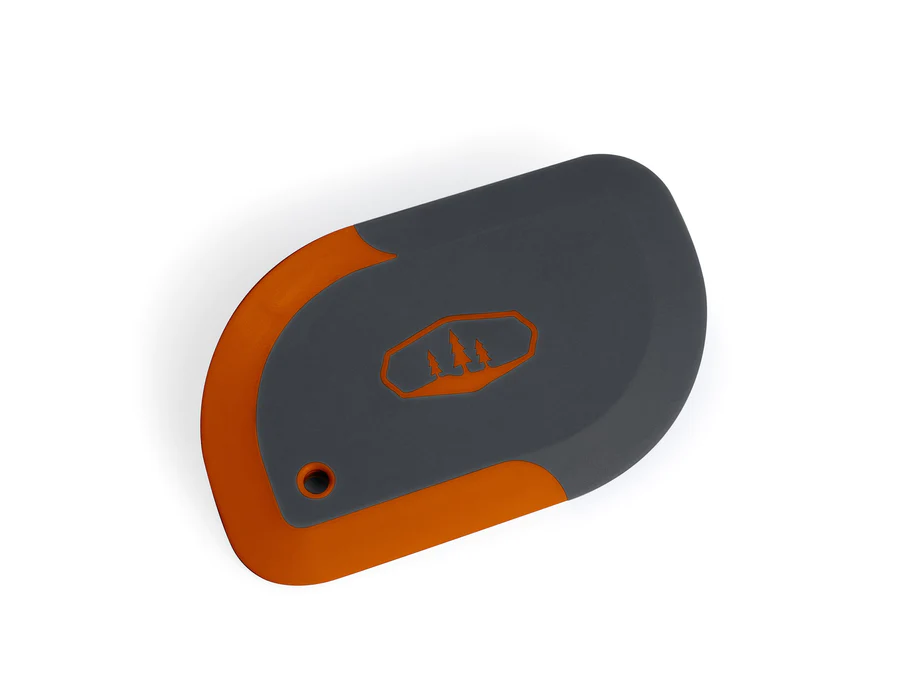
This little scraper is my favorite cleanup tool when I cook real meals on the trail. The silicone end acts as a spatula, letting me get every last morsel off of my pots and pans and into my belly. The plastic end is tough enough to scrape caked-on bits of food and the occasional burned bits off of the bottom of a pot, without actually damaging the pot. It’s basically indestructible and it comes with me on every commercial trip I run. – Sarah Bennett
Goodr OG Sunglasses

These hit the sweet spot for me as being high enough quality to have what I want (polarized lenses and clarity) while also being inexpensive. I love how they don’t bounce or slip off when I sweat or run. – Anna Swarts
Healthy Sense of Humor and Hype
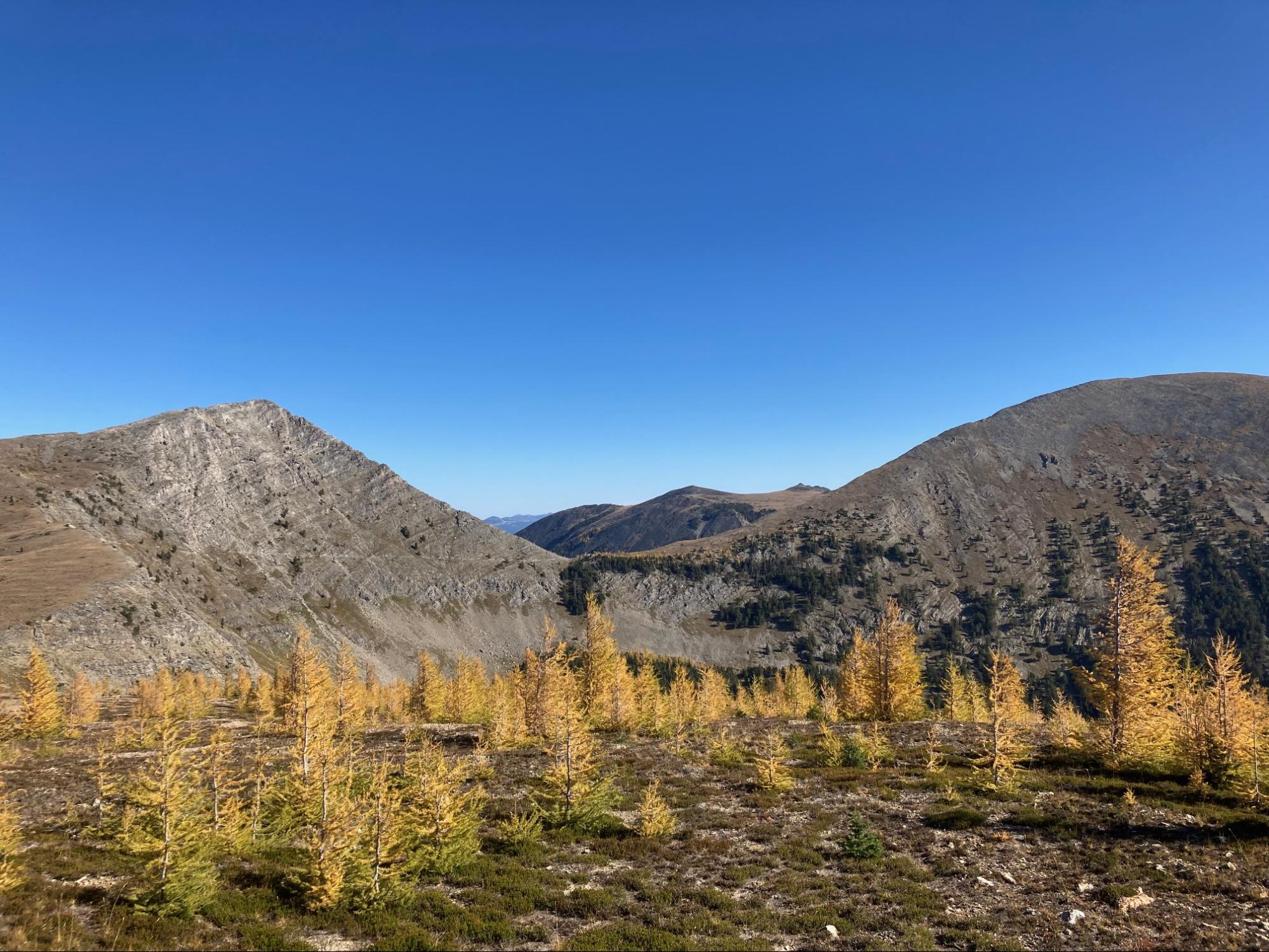
This year I wanted to get friends and acquaintances hyped about backpacking trips. I started hyping up a series of backpacking trips and dayhikes in late September that focused on seeing alpine larch in its golden autumn splendor and dubbed it “Larchapalooza” (photo attached). A second series of trips focused on visiting natural hot springs in early October, which was called “Soaktober”. This led to a lot more interest and enthusiasm (both in myself and others) than when it was “only” framed as a backpacking trip to a cool area. The power of branding, I suppose! – Mark Wetherington
Kula Cloth
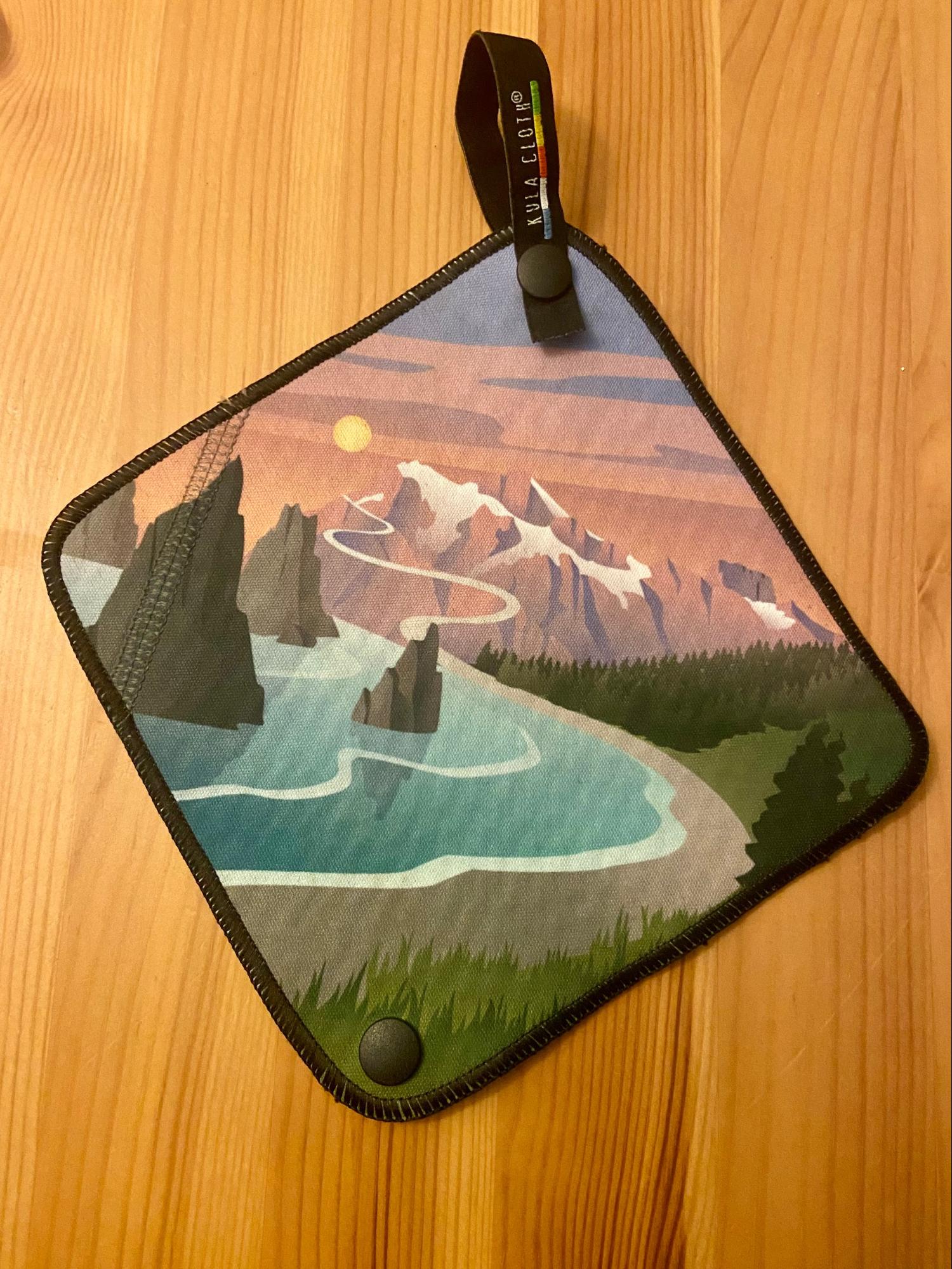
I went many years without one because I figured it couldn’t be that much better than the generic piece of cloth I had been using. However, I’m finding that it really is as great as everyone says. Not only does it feel more sanitary but it also has a fun design for one of my favorite trails (the PNT). Their customer service was top notch too! – Anna Swarts
- Learn more about the Kula Cloth in the Backpacking Light Gear Shop.
Leatherman Squirt PS4
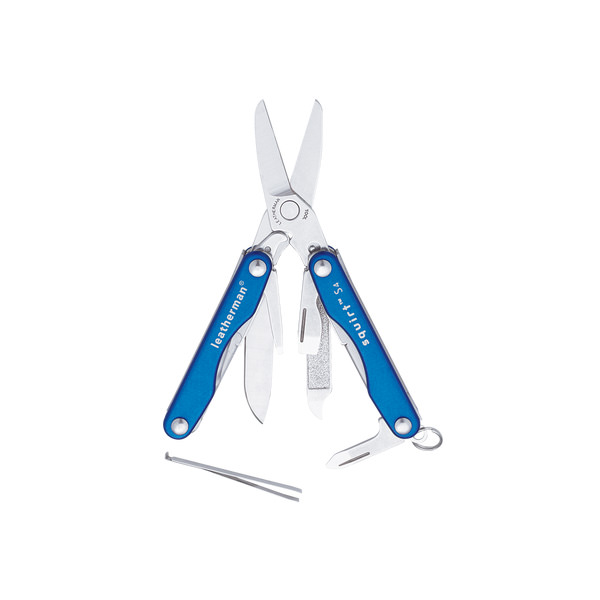
This is the lightest multi-tool with a plier I can find, weighing in at only 1.9 oz (54g). Having this tool in my kit helps simplify zipper repair while in the field. – Atif Khan
Nitecore NU25 Headlamp
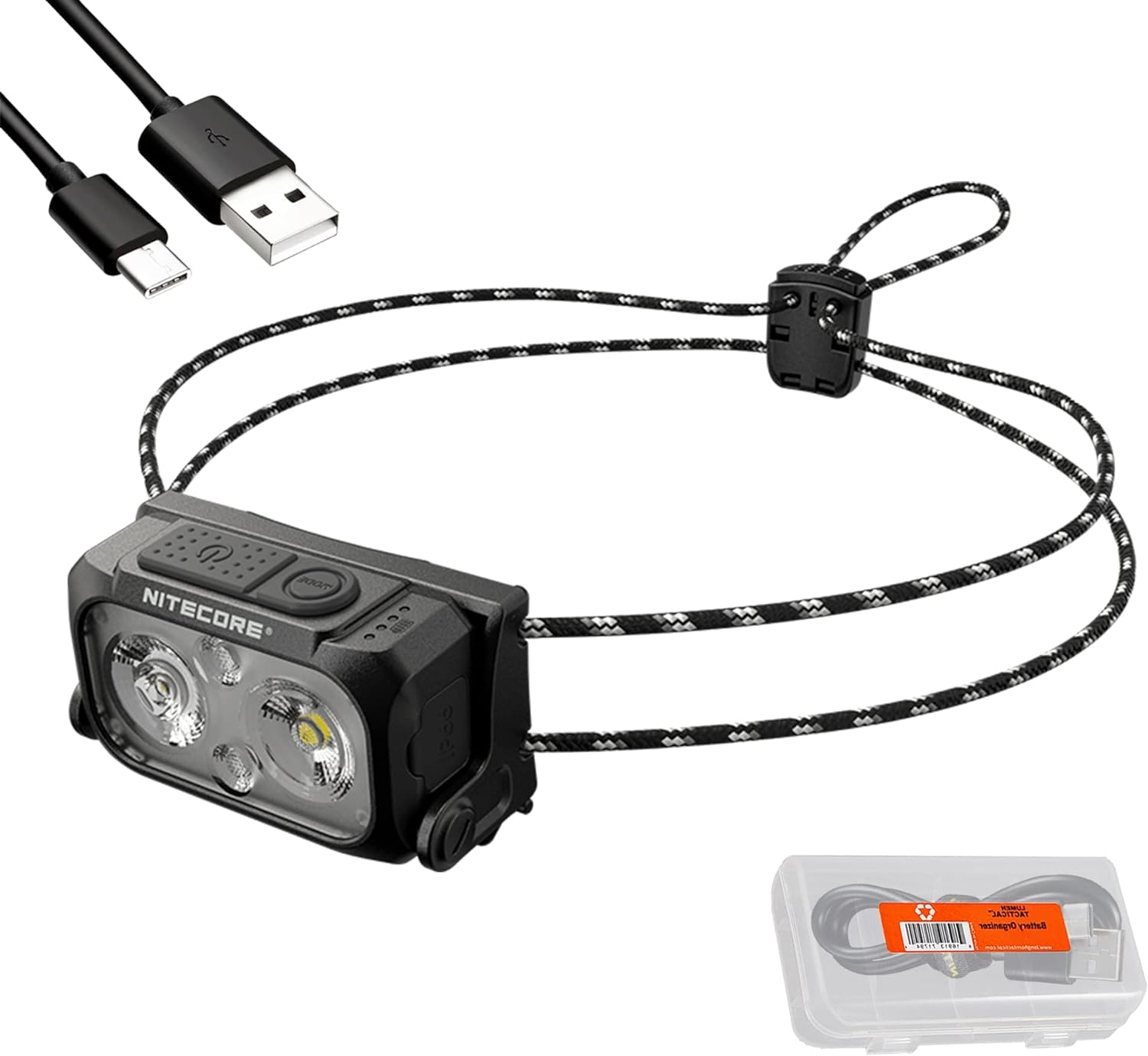
At about half or a third the weight of most similarly-rated headlamps, as well as comparable features, I can’t find a good reason not to take it on most trips. – Ben Kilbourne
- Learn more about the Nitecore NU25 Headlamp in the Backpacking Light Gear Shop.
Ombraz Sunglasses

After decades wearing conventional sunglasses, I smacked my head when I first put on a pair of Ombraz armless sunglasses. The concept is brilliant – no more interference with headwear layers, whether the cord is worn under or on top of my hats or hoods. A huge bonus are Zeiss Optics lenses for gorgeous clarity and polarization with no distortion. And they’re light! – Ryan Jordan
- Learn more about Ombraz Sunglasses in the Backpacking Light Gear Shop.
Tenkara USA Satoki Rod
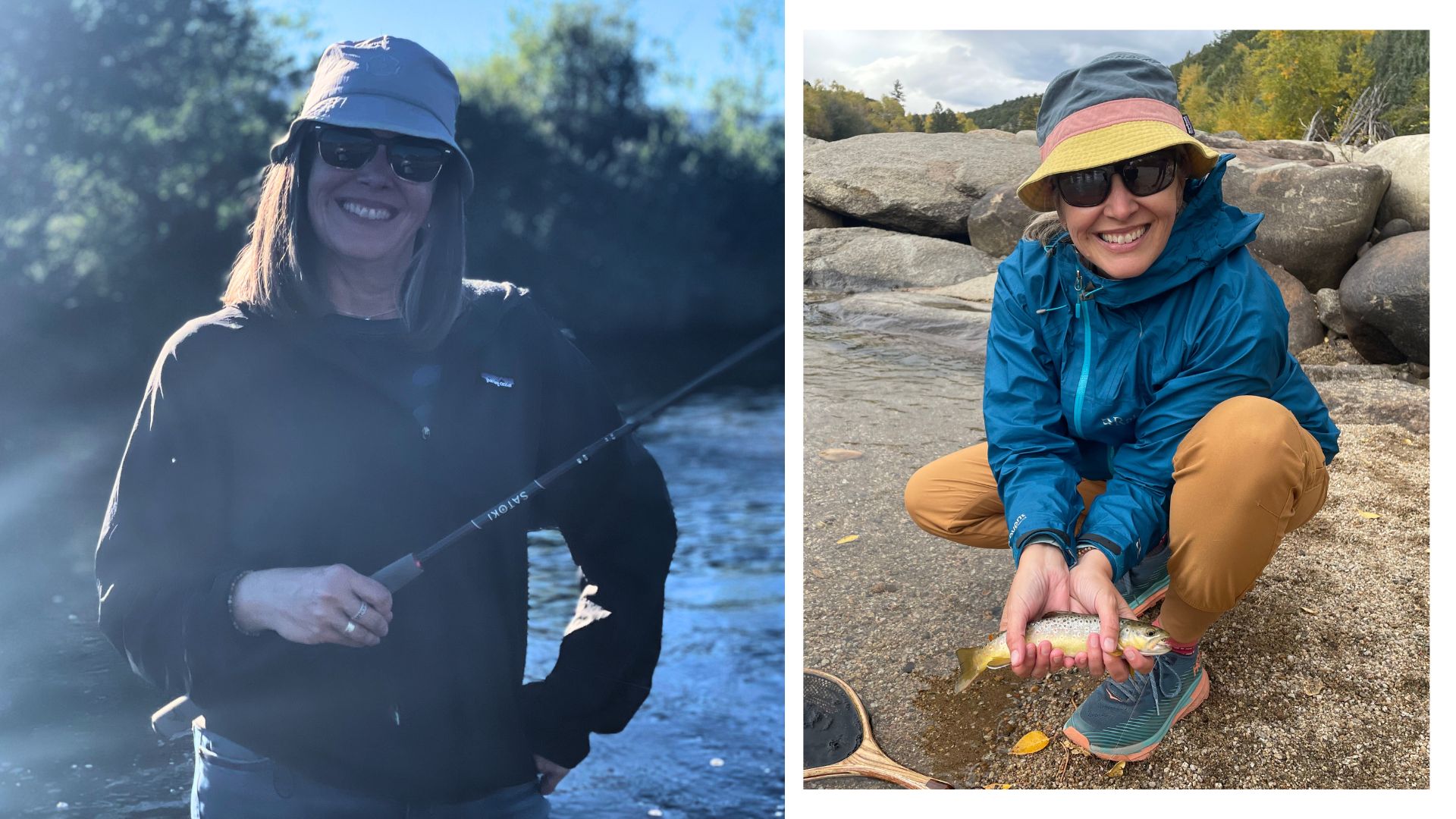
I’ve never been a fan of adjustable zoom tenkara rods in the past – too much fiddling and the longest lengths are often cumbersome. The Tenkara USA Satoki is easy to cast, and this year during high water on the Arkansas River (CO), it gave me the reach to find narrow feeding lanes of wary brown trout at dusk on the opposite side of the main current. – Stephanie Jordan
Voile Ultravector BC Skis
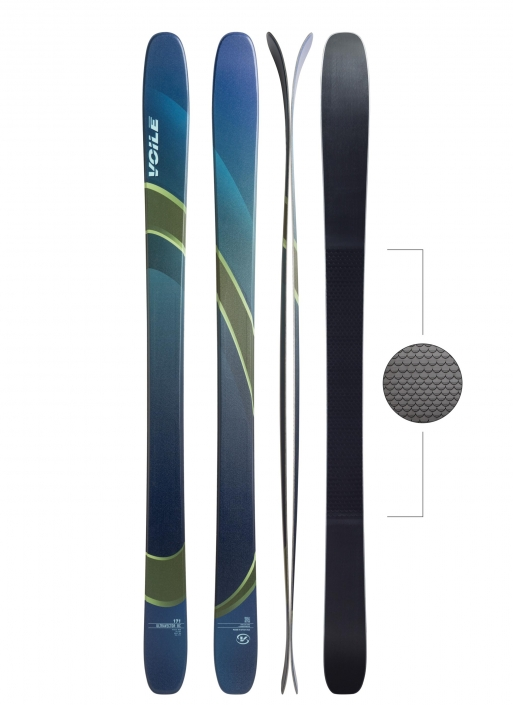
This is a super fun all-around backcountry touring ski with the added versatility of scales. It’s awesome for winter overnighters where you have a long approach over rolling terrain. Just leave the skins in the pack until you get to the steeper stuff. Voile skis are light, and these are no exception, but they’re also not too light. At around 1570 grams in a size 177 they’re in that sweet spot where they still perform well turning at speed in spring conditions. – Ben Kilbourne
DISCLOSURE (Updated November 7, 2019)
- Some (but not all) of the links on this page may be “affiliate” links. If you click on one of these links and visit one of our affiliate partners (usually a retailer site), and subsequently place an order with that retailer, we receive a small commission. These commissions help us provide authors with honoraria, fund our editorial projects, podcasts, instructional webinars, and more, and we appreciate it a lot! Thank you for supporting Backpacking Light!

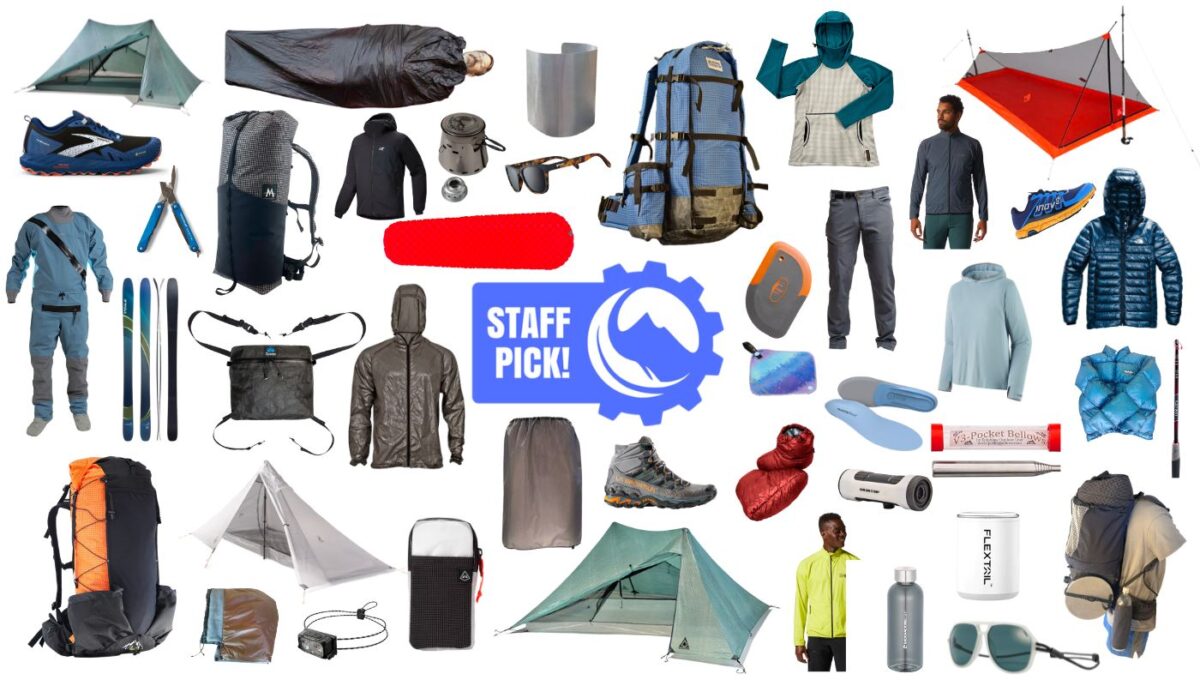


Home › Forums › Staff Picks 2023